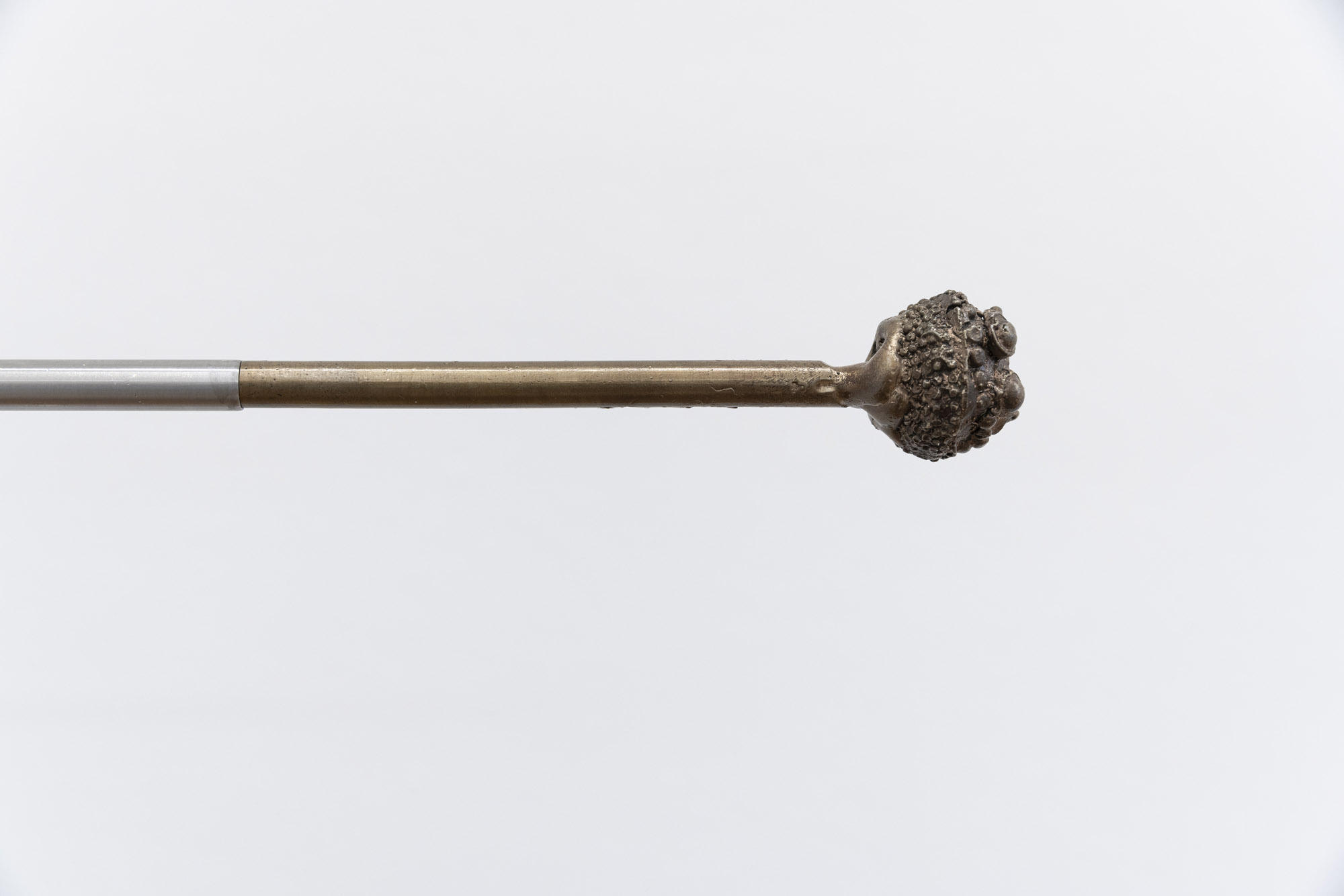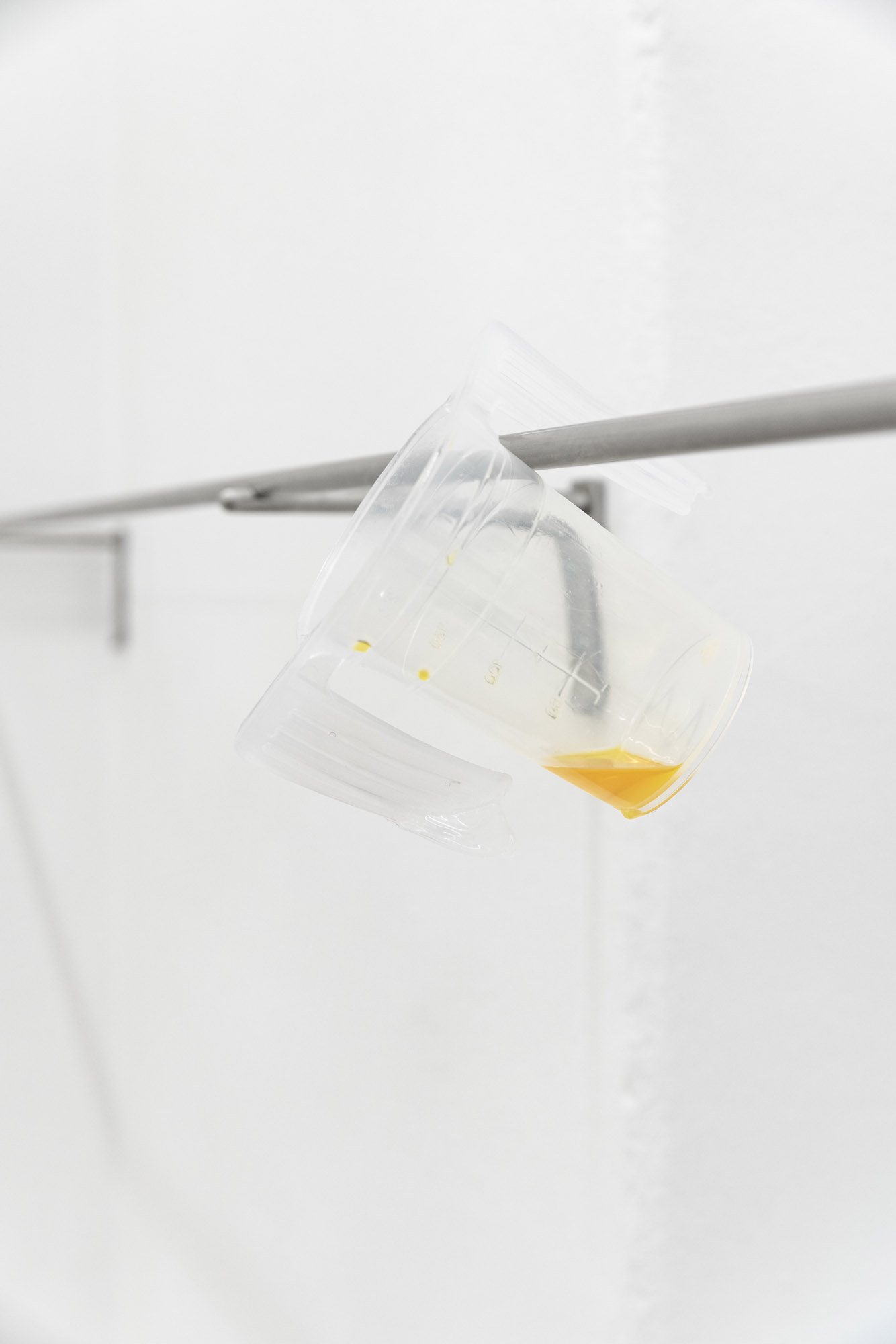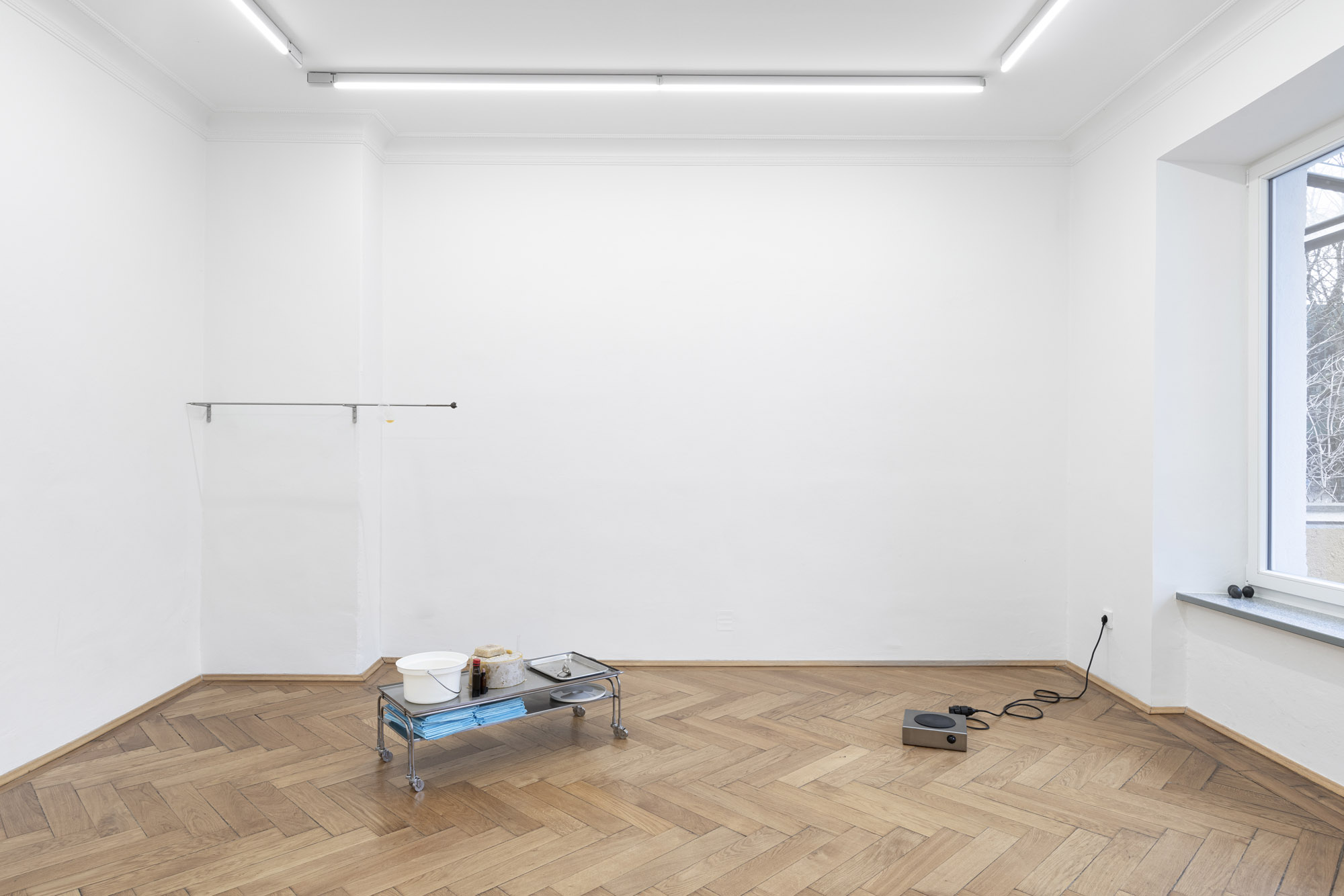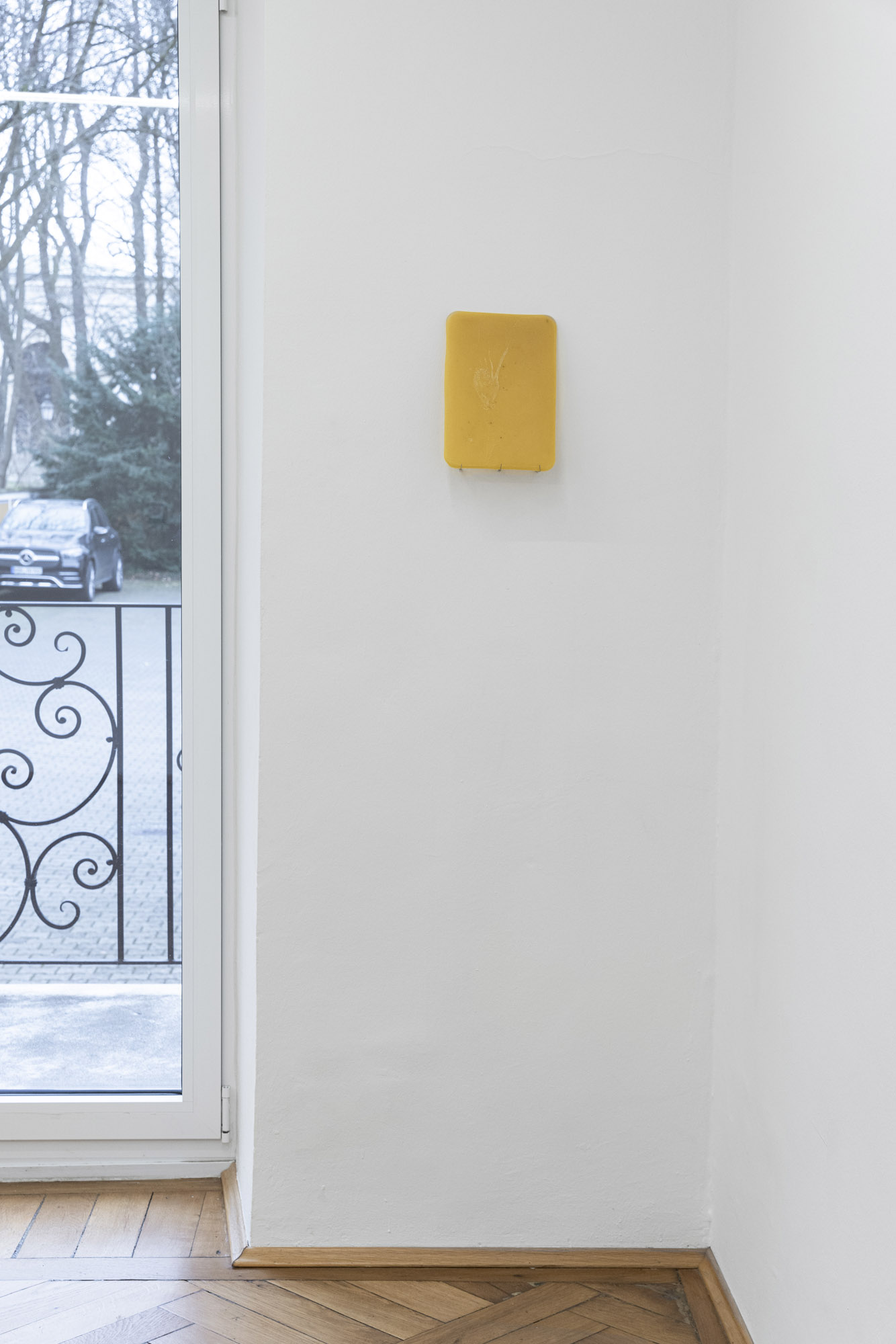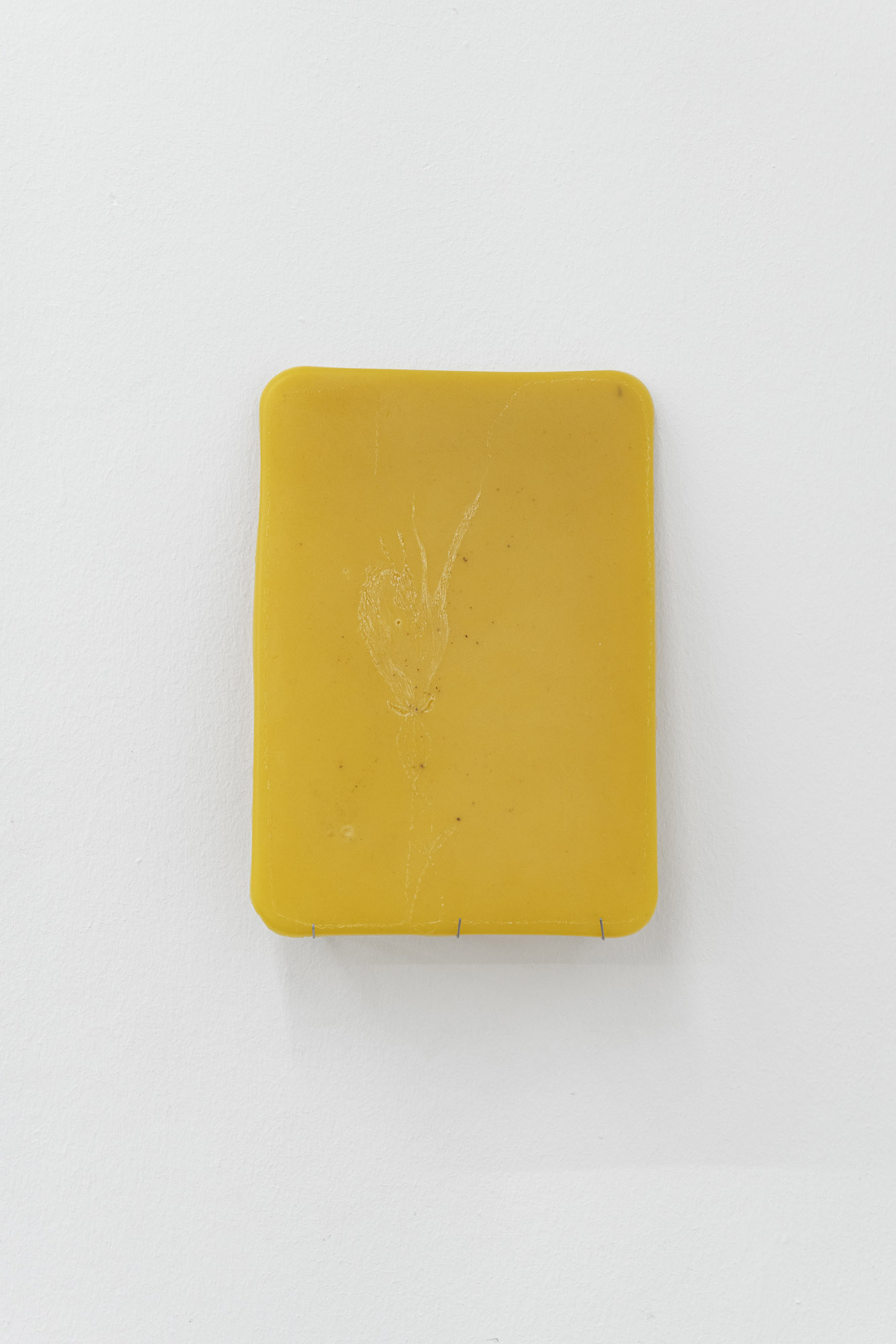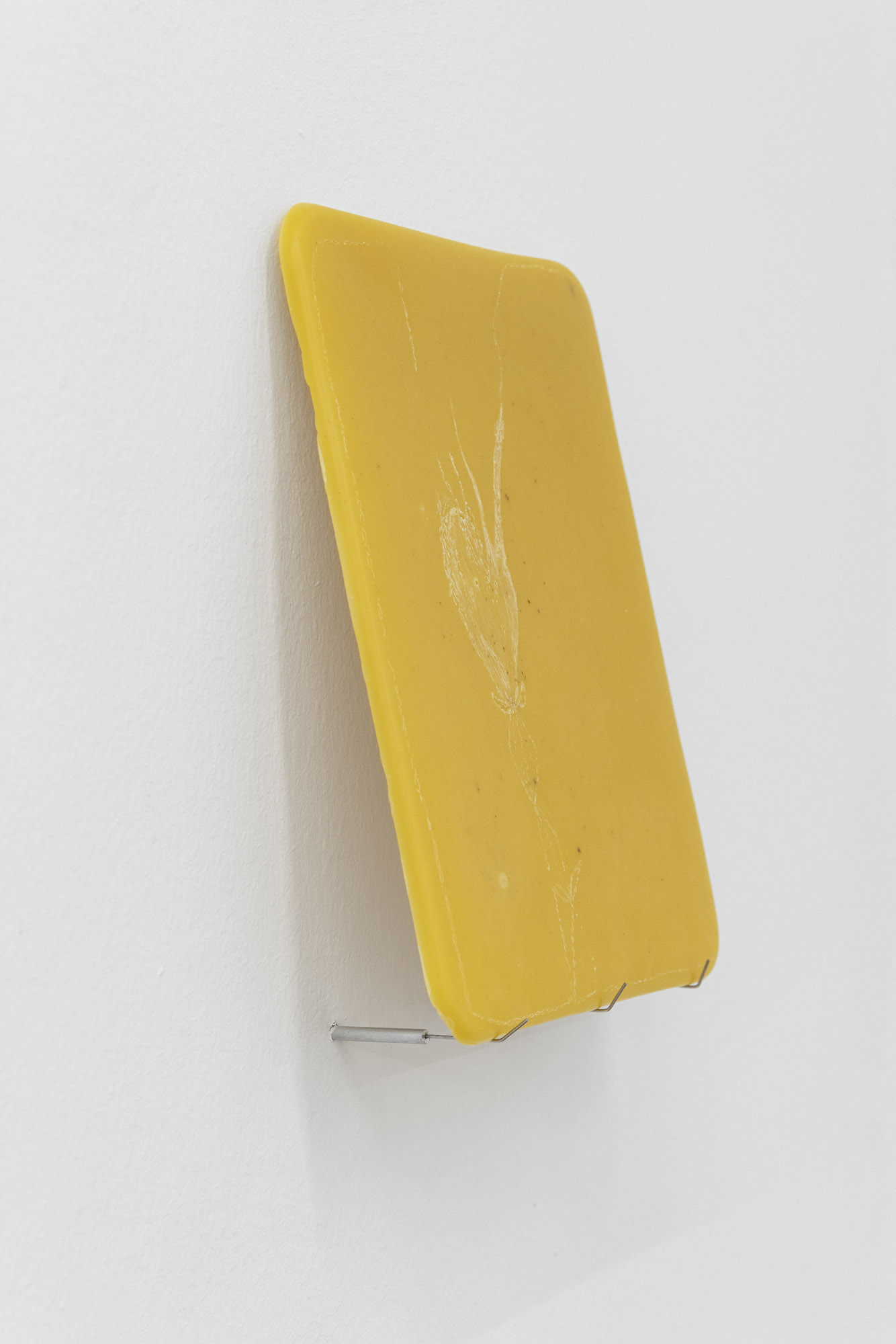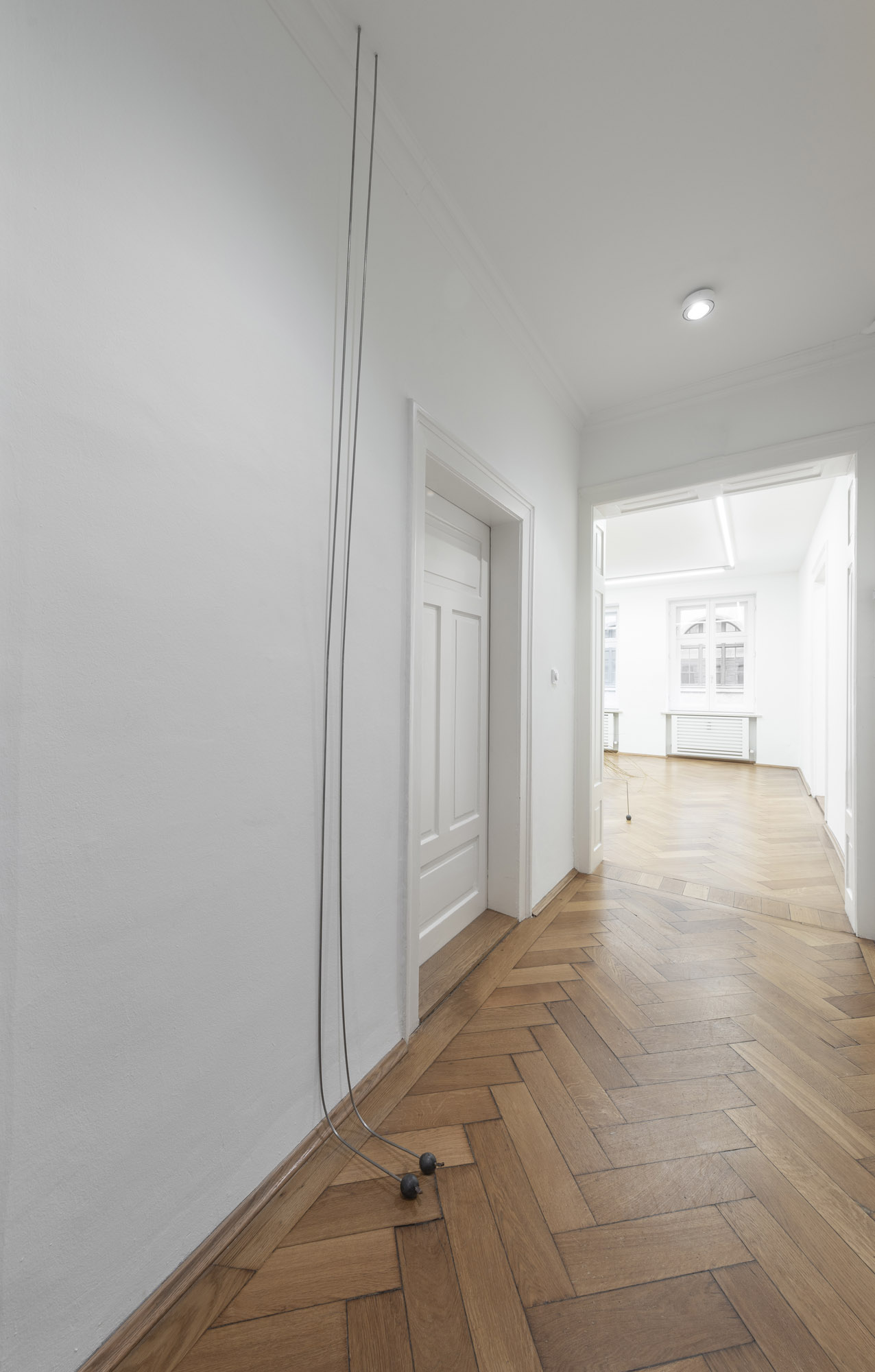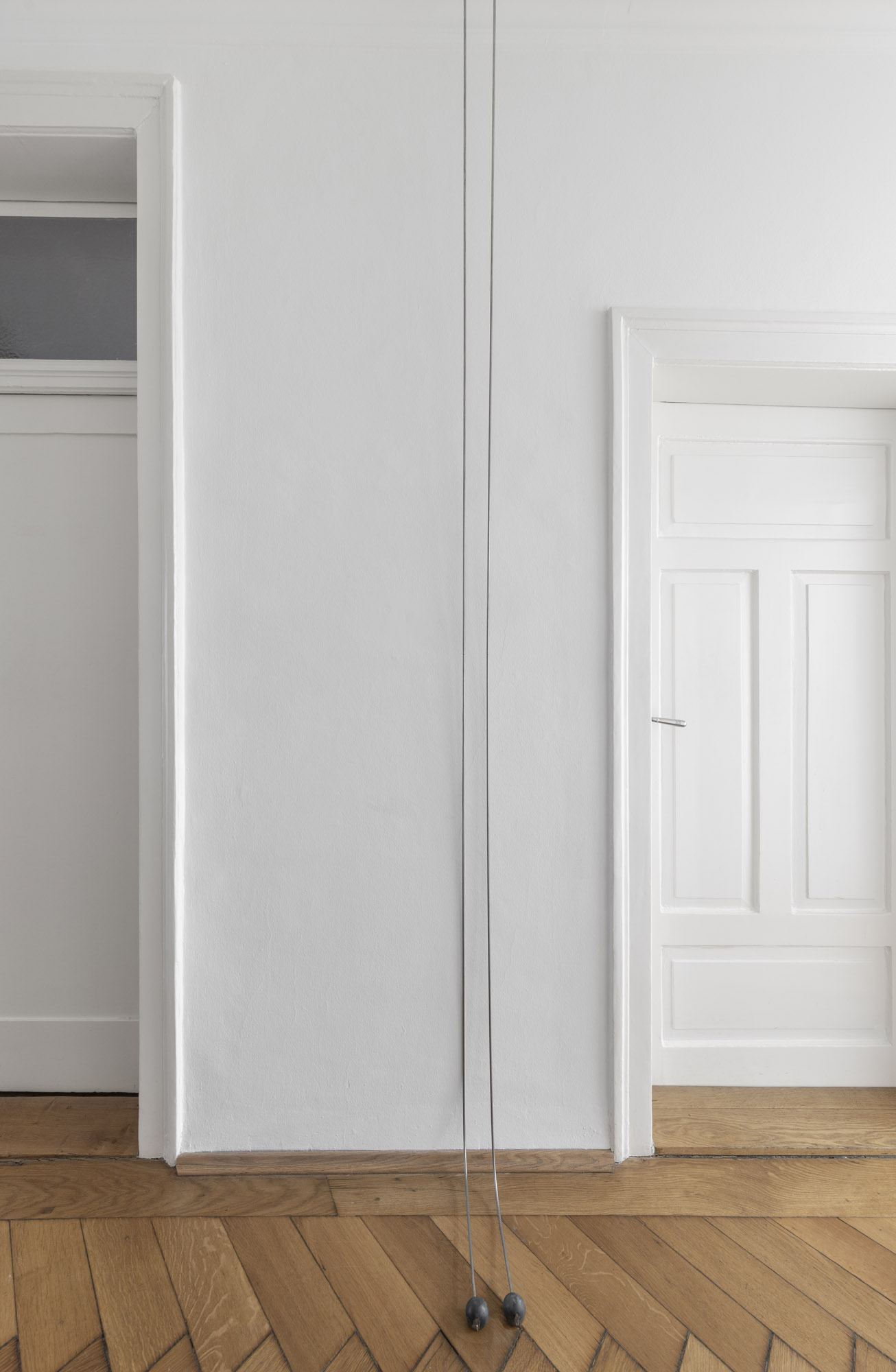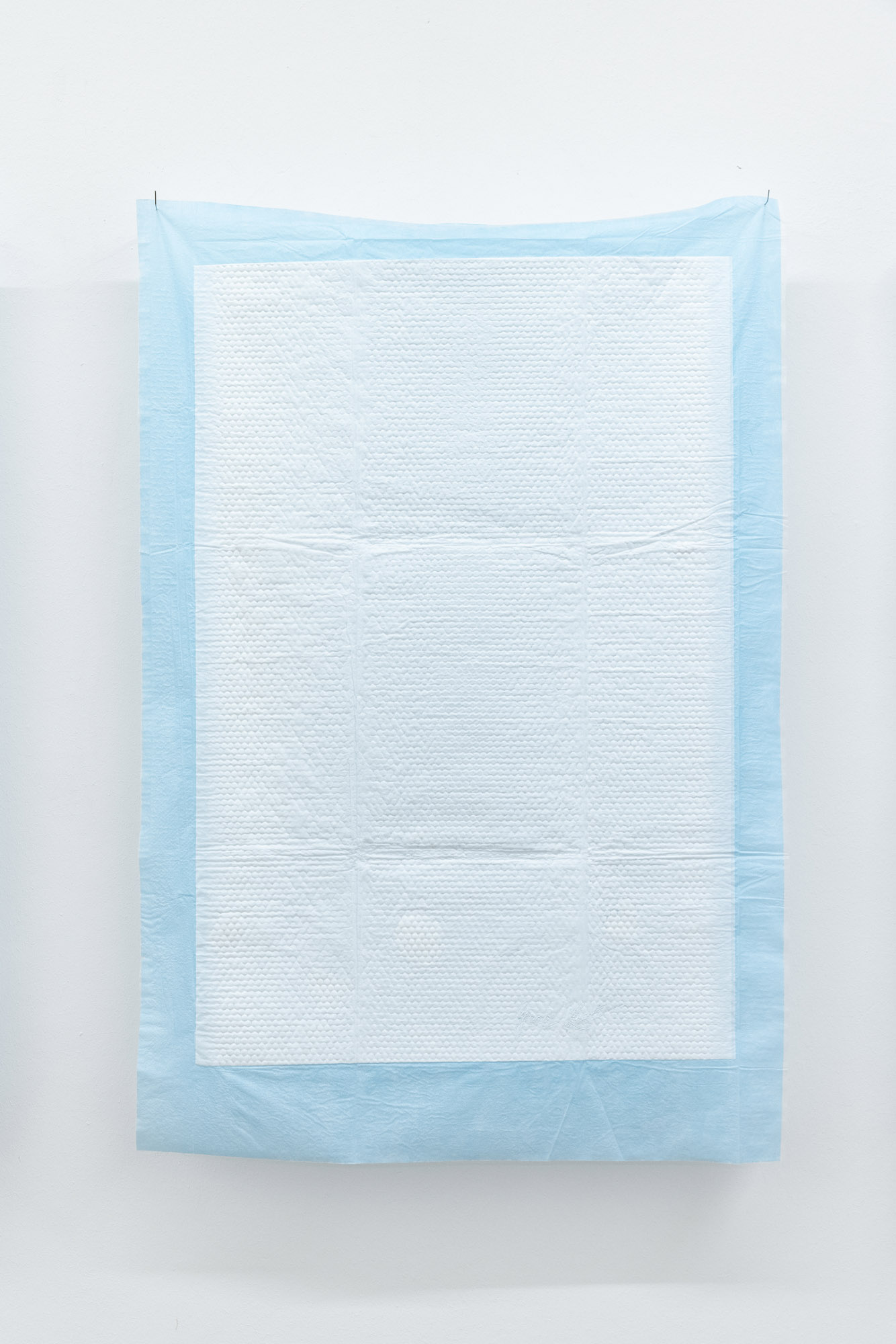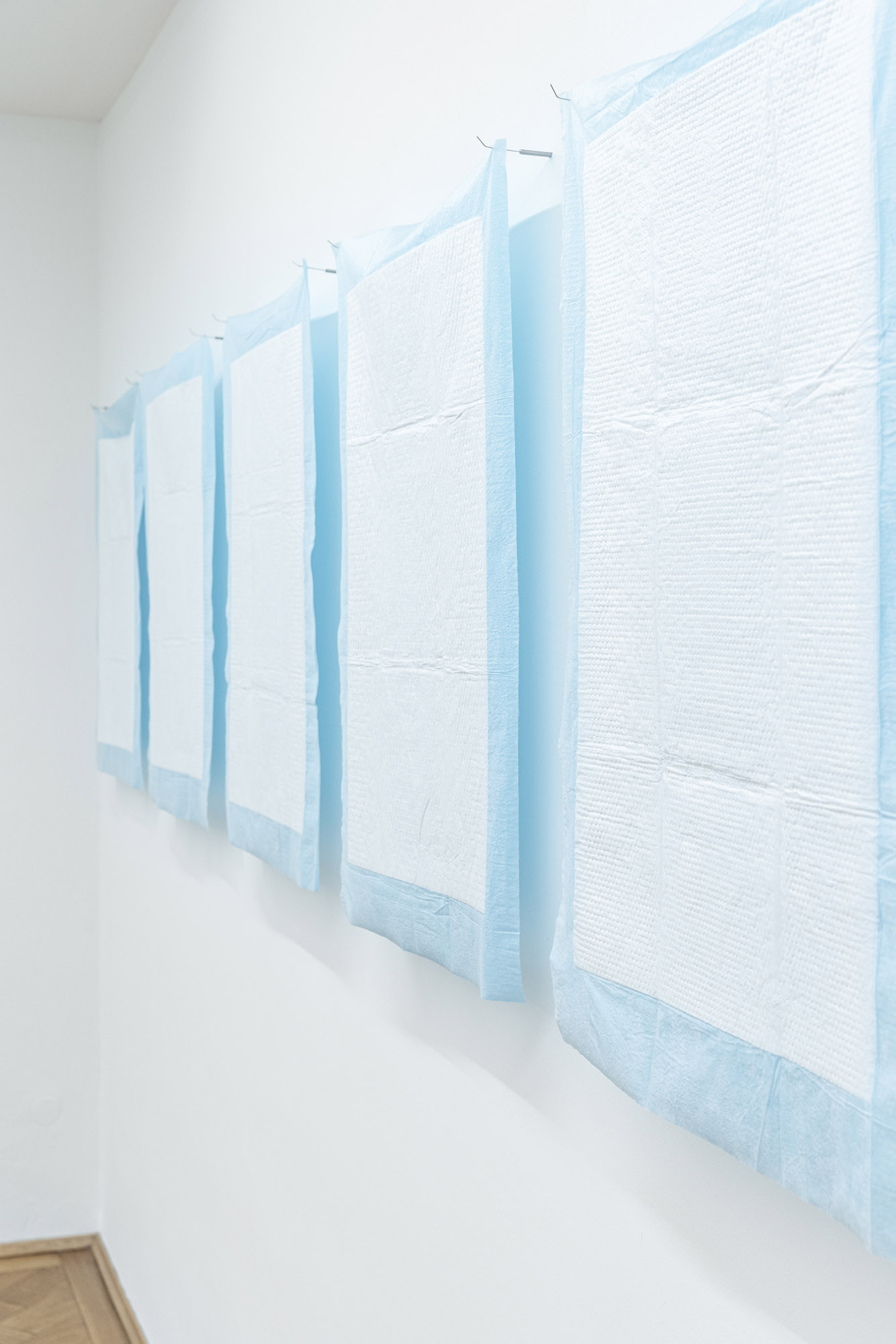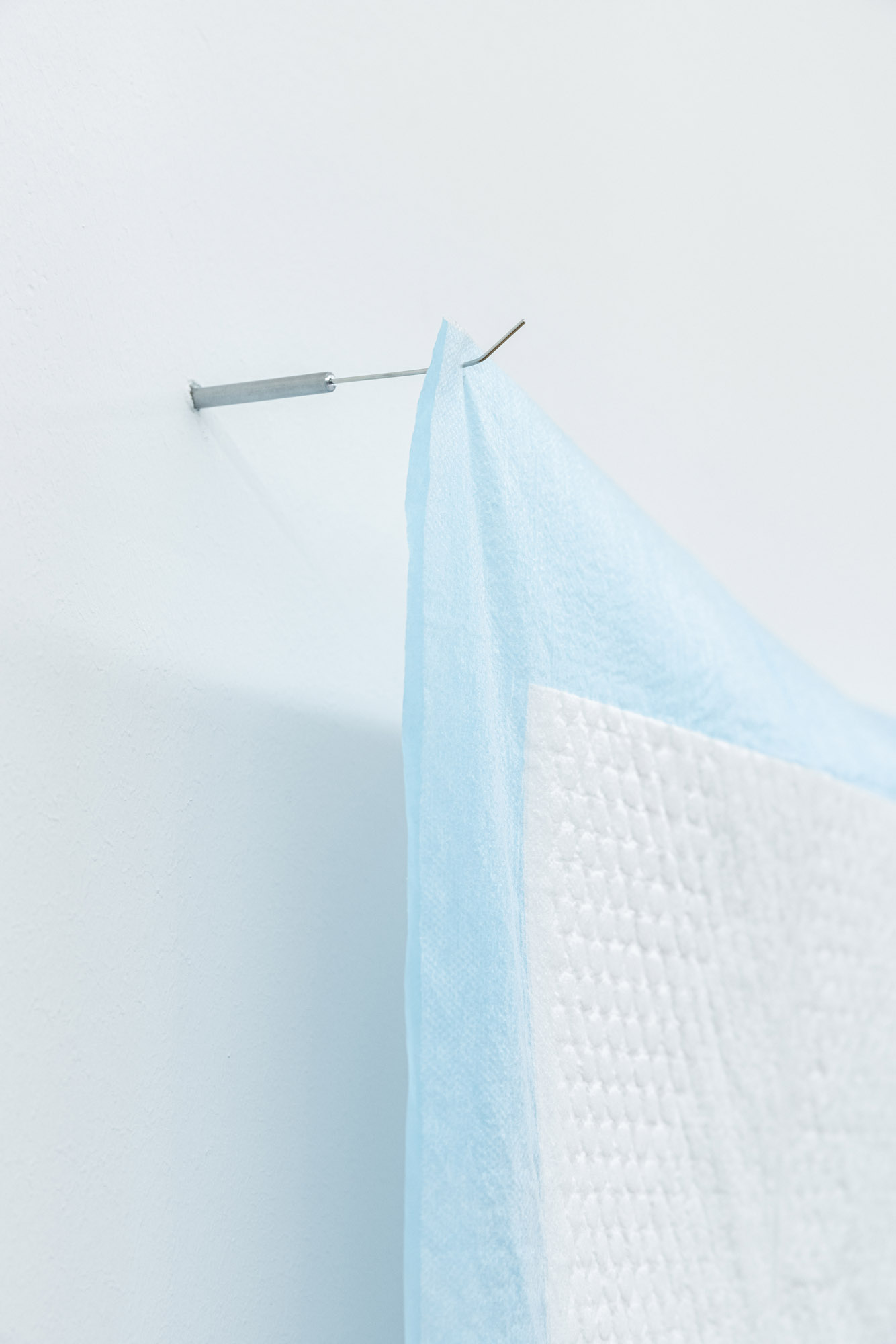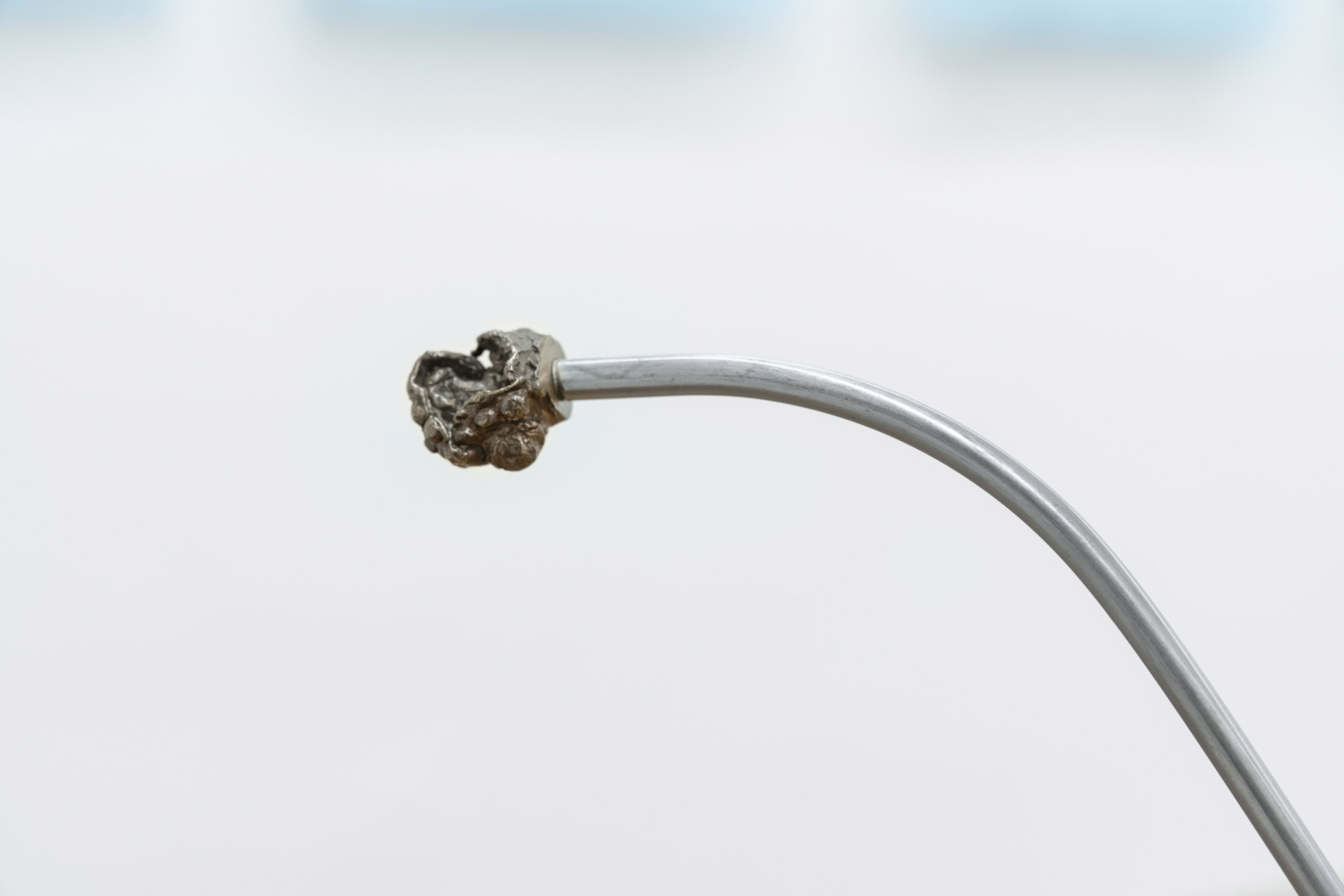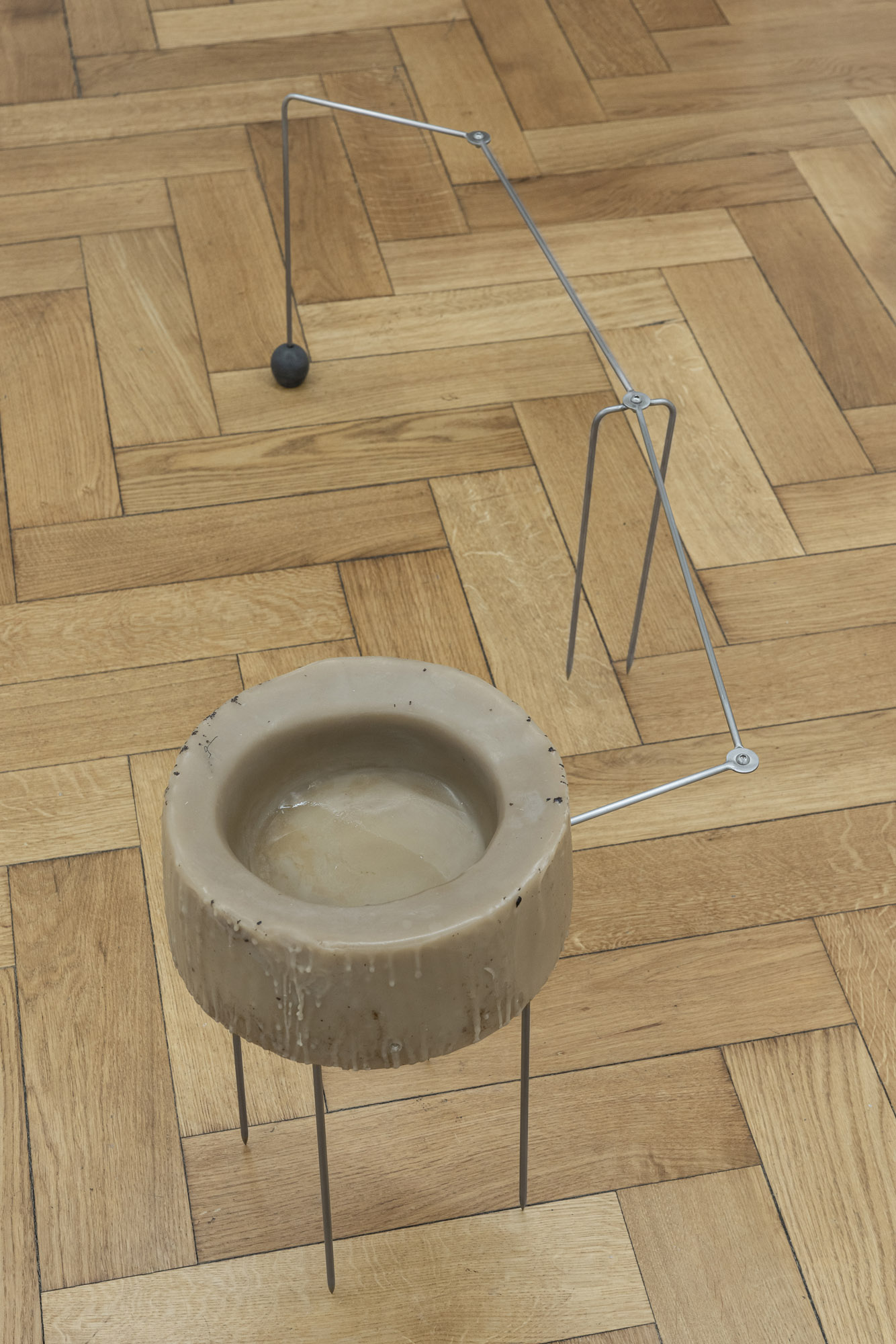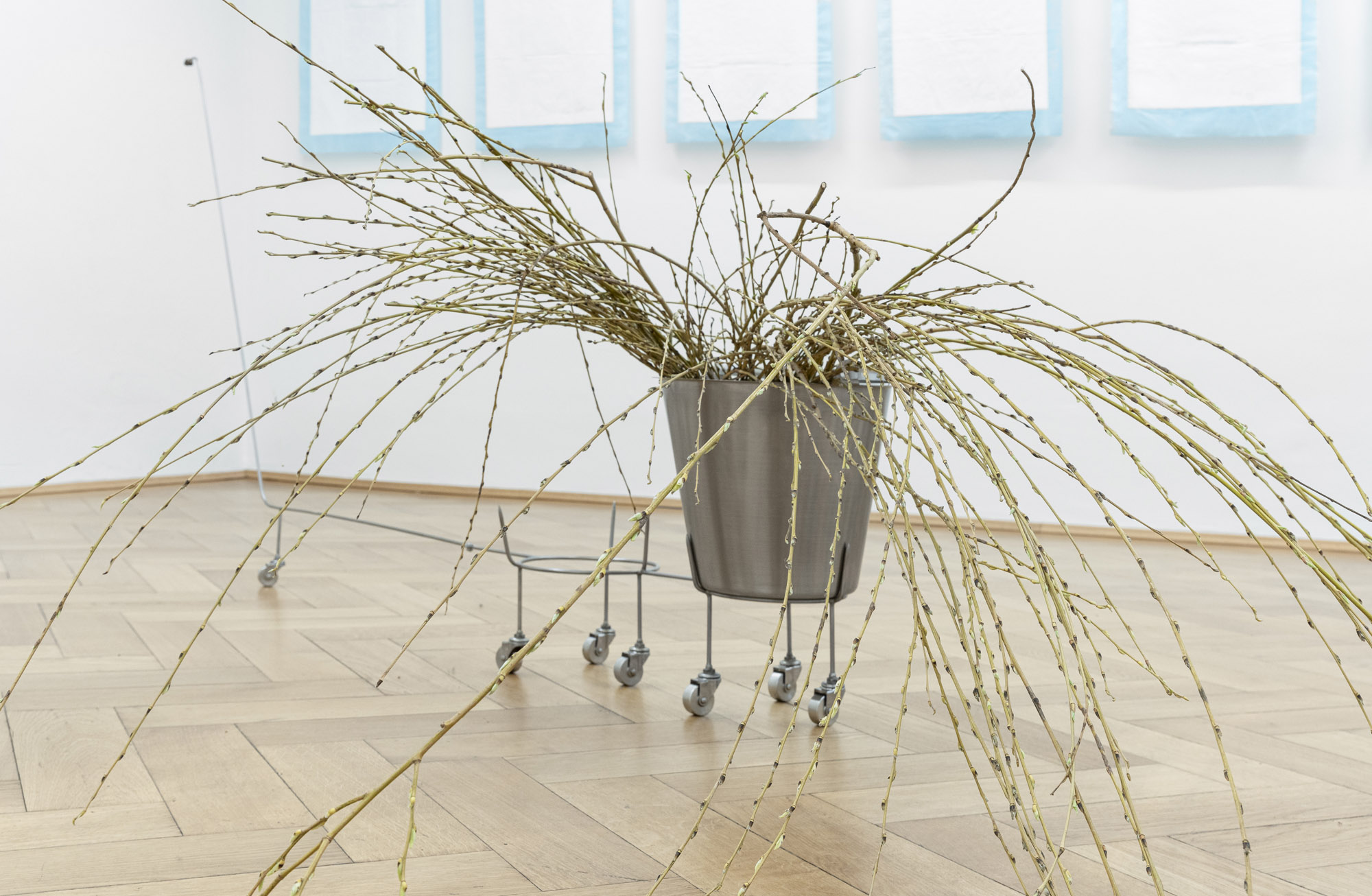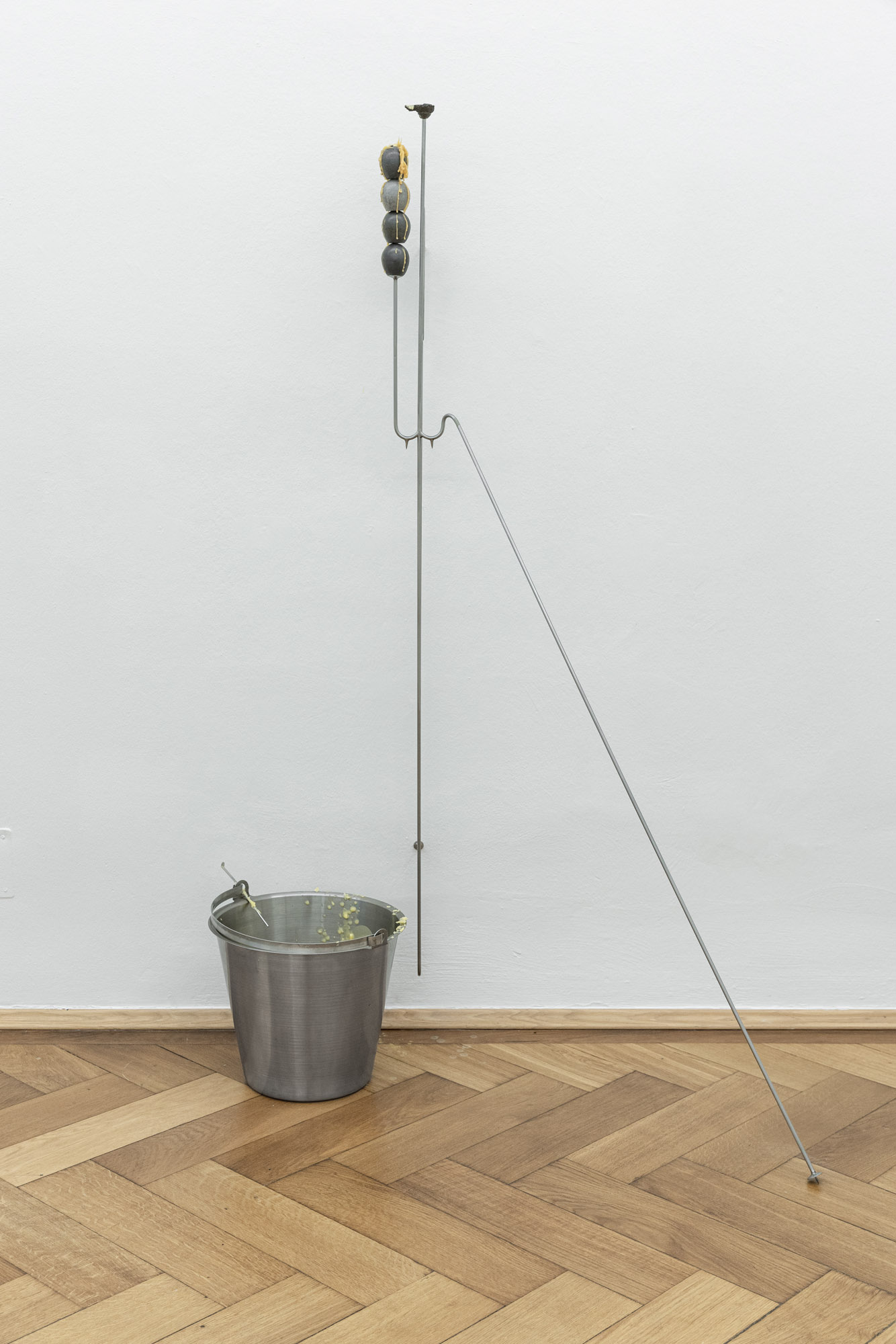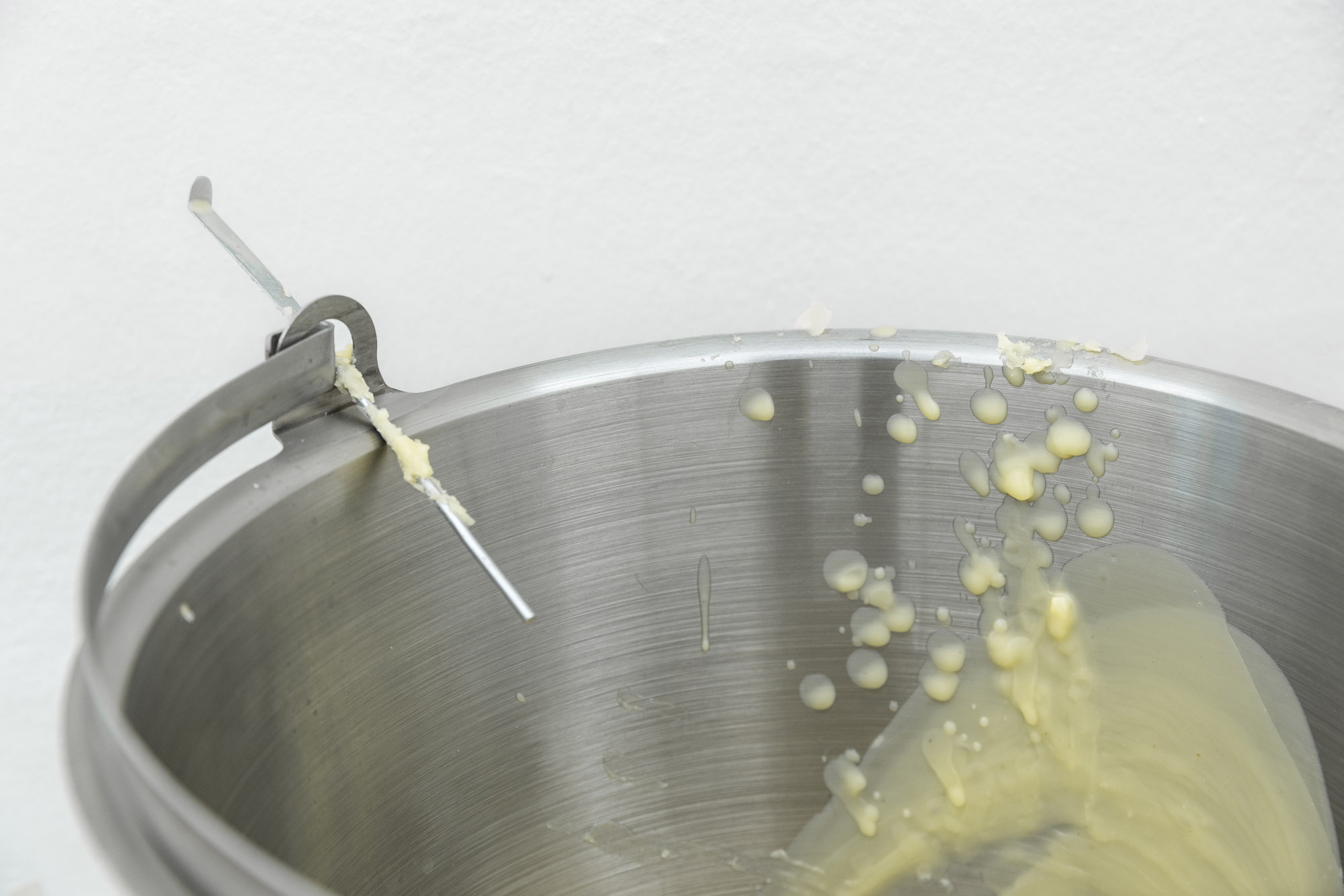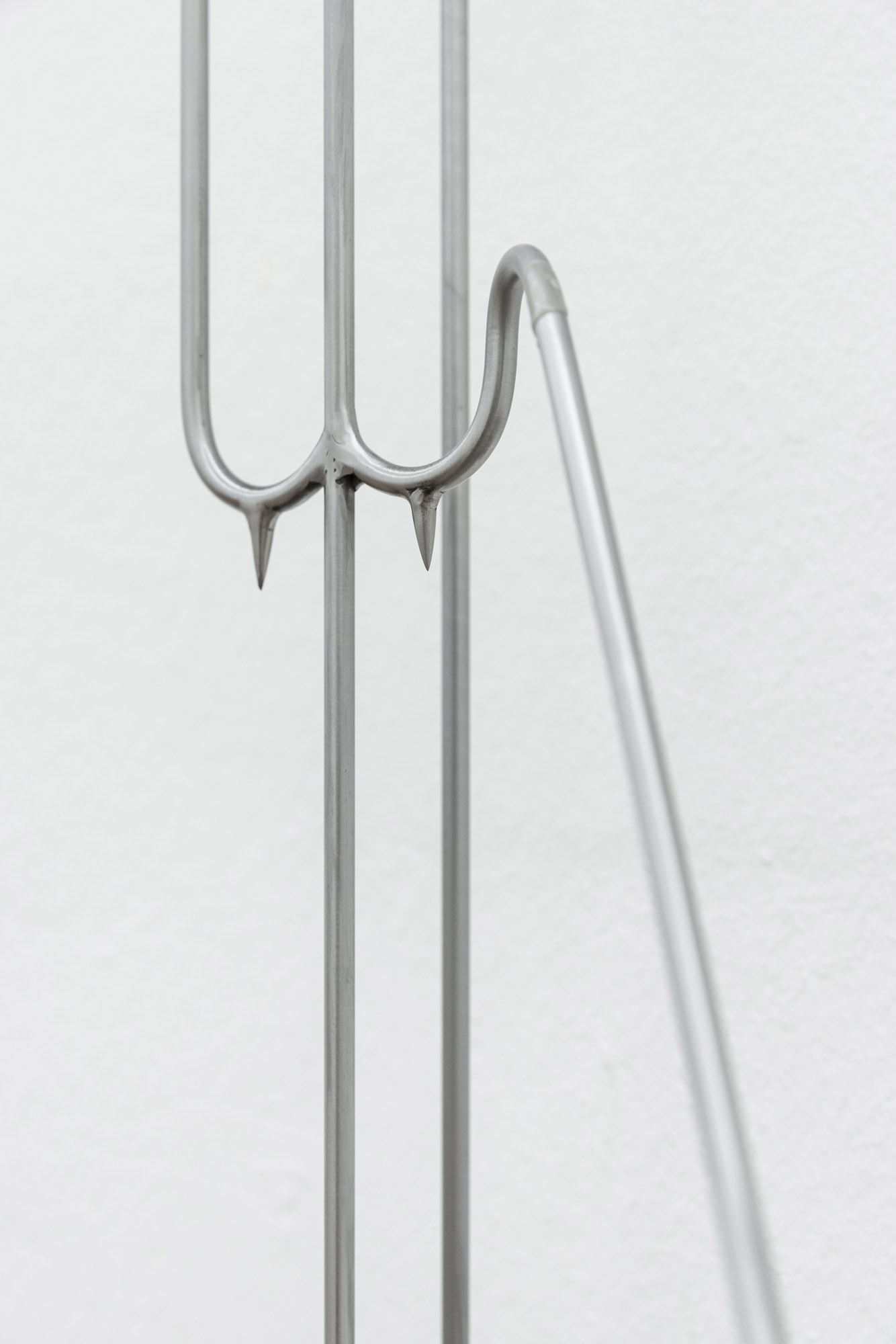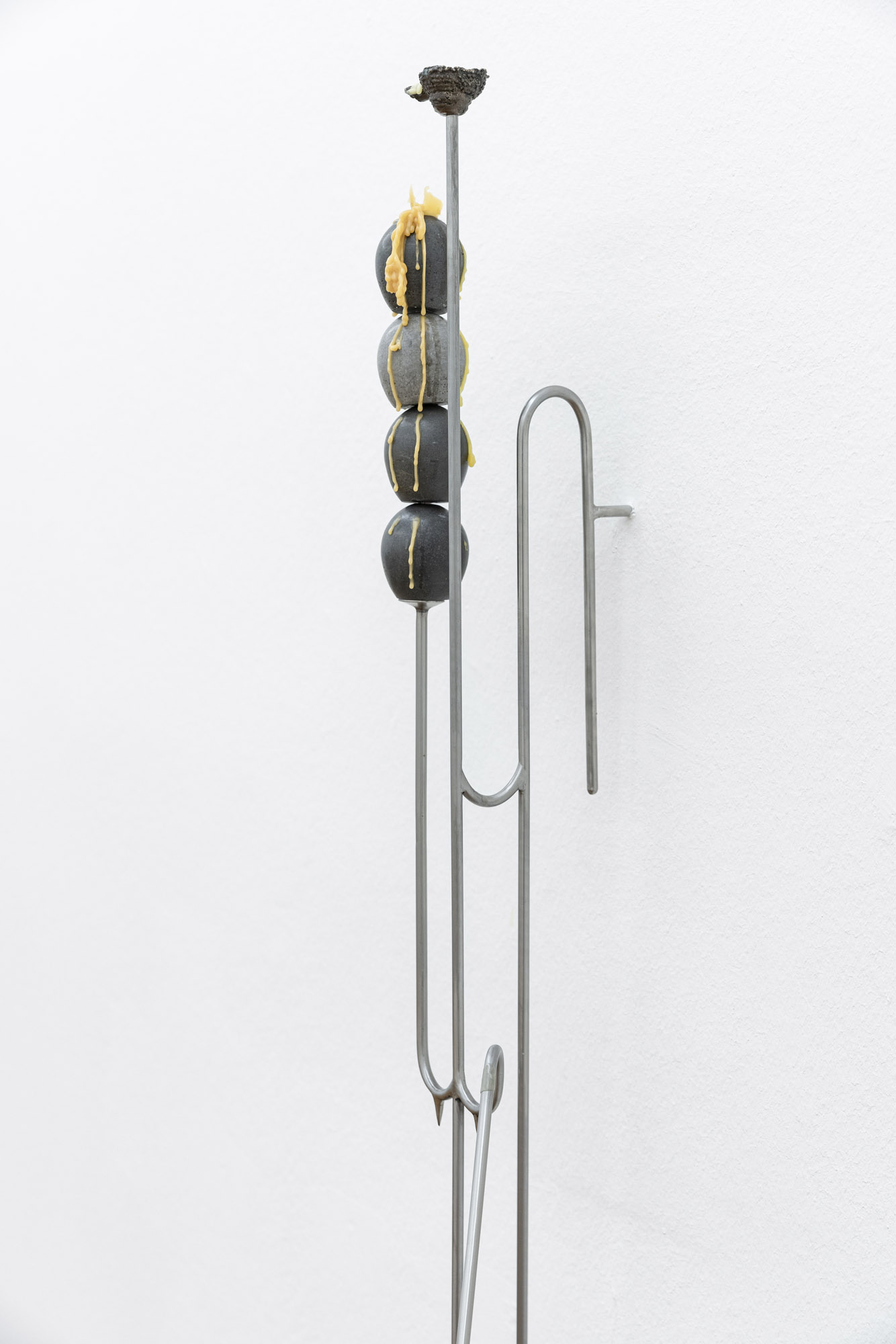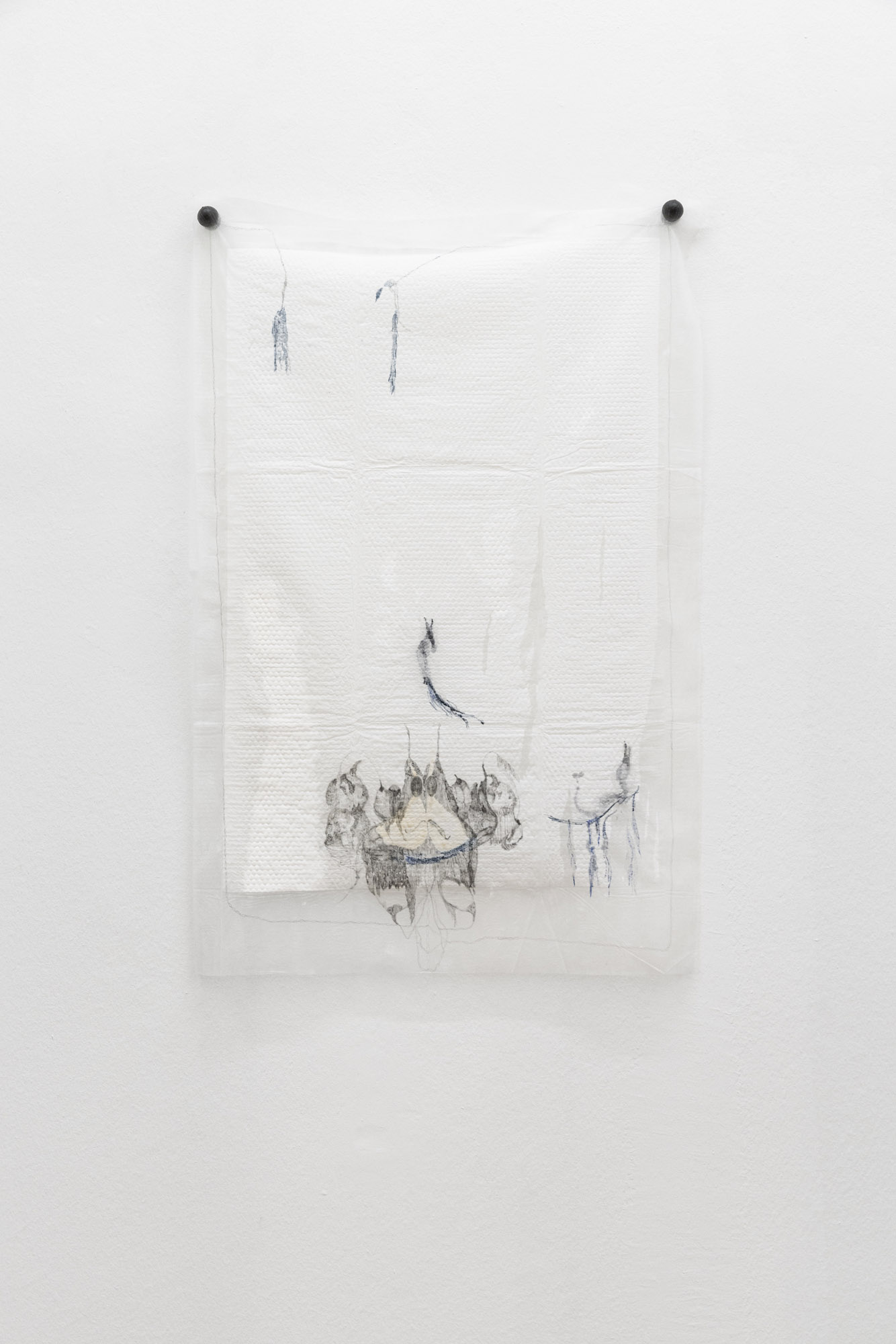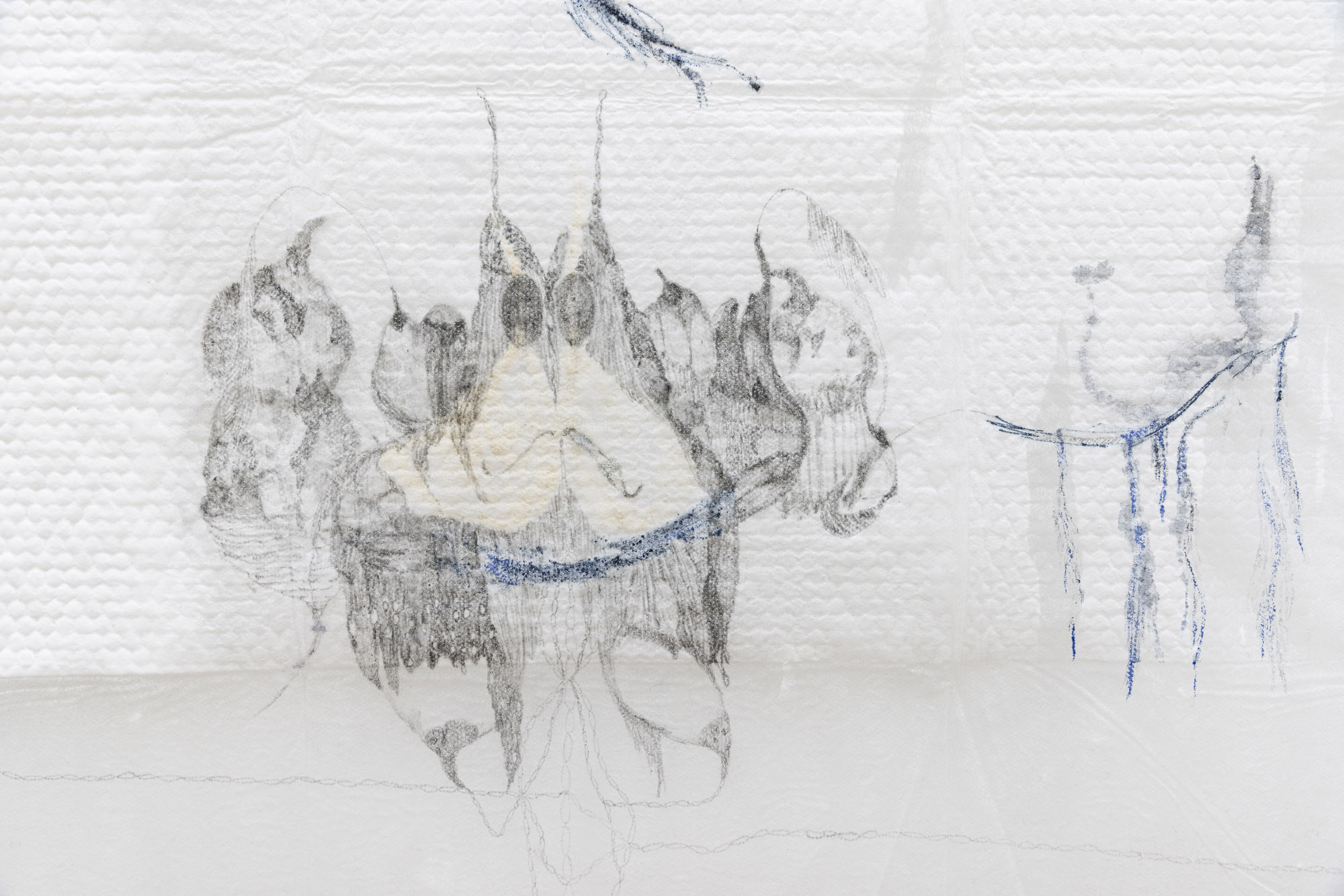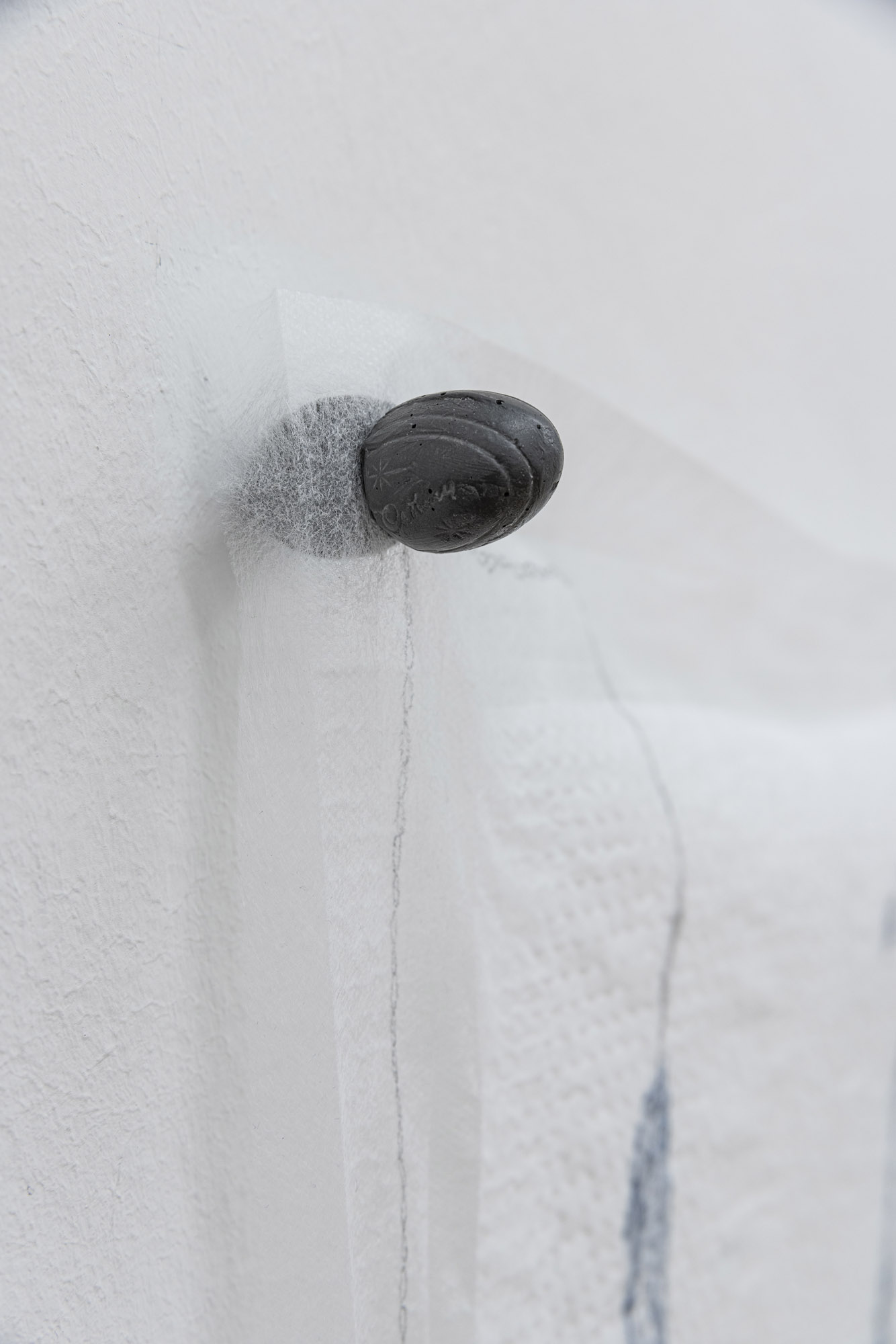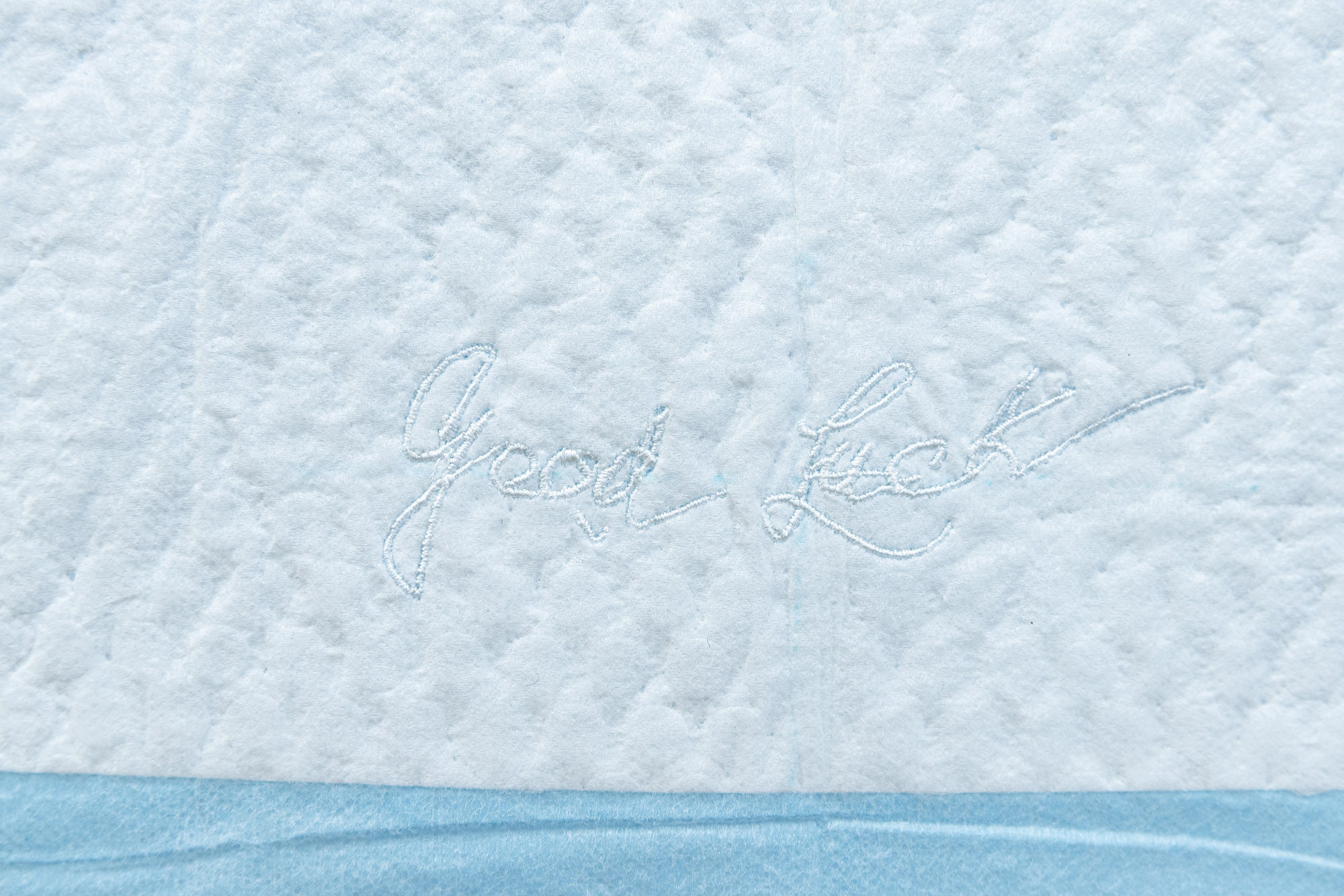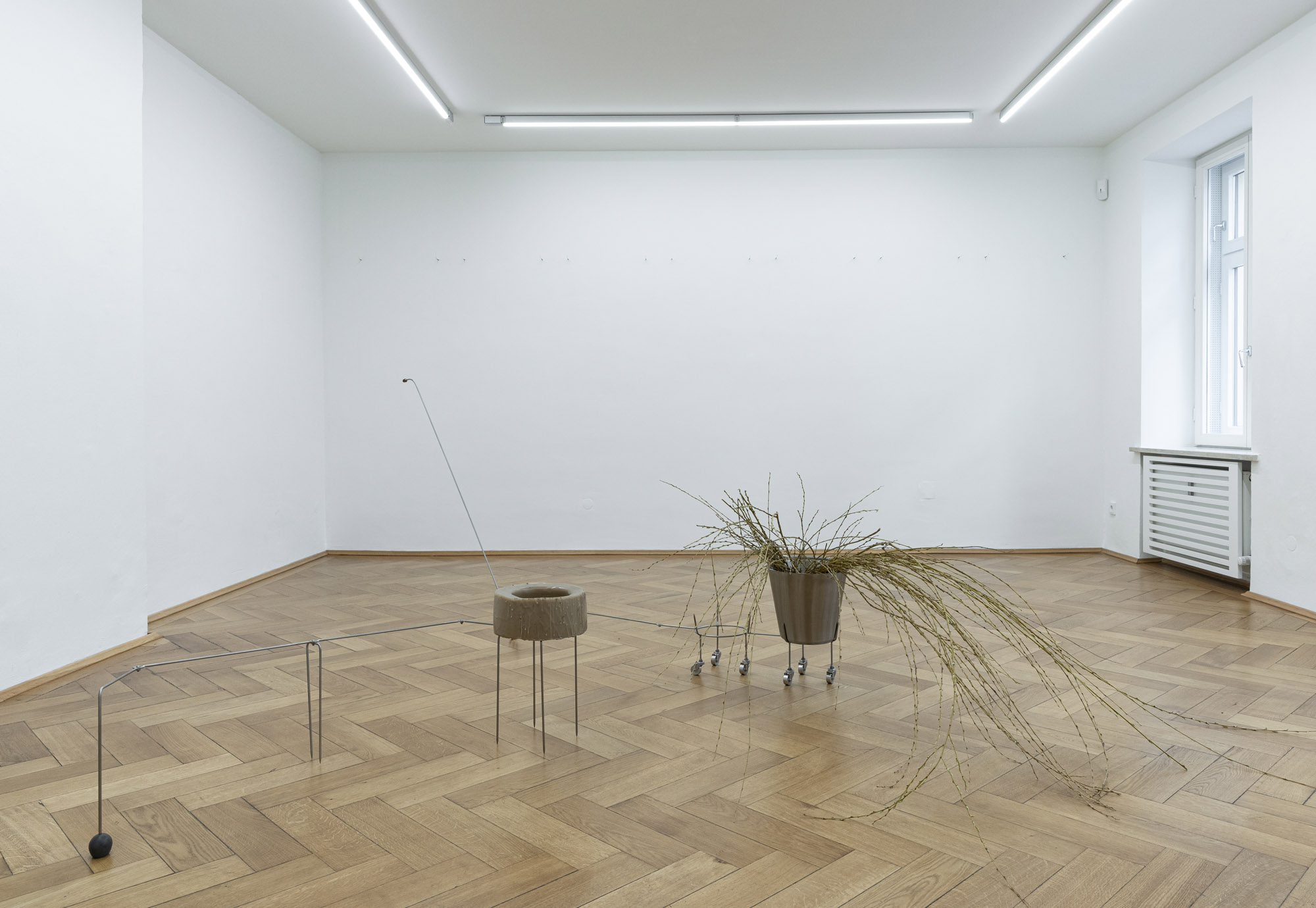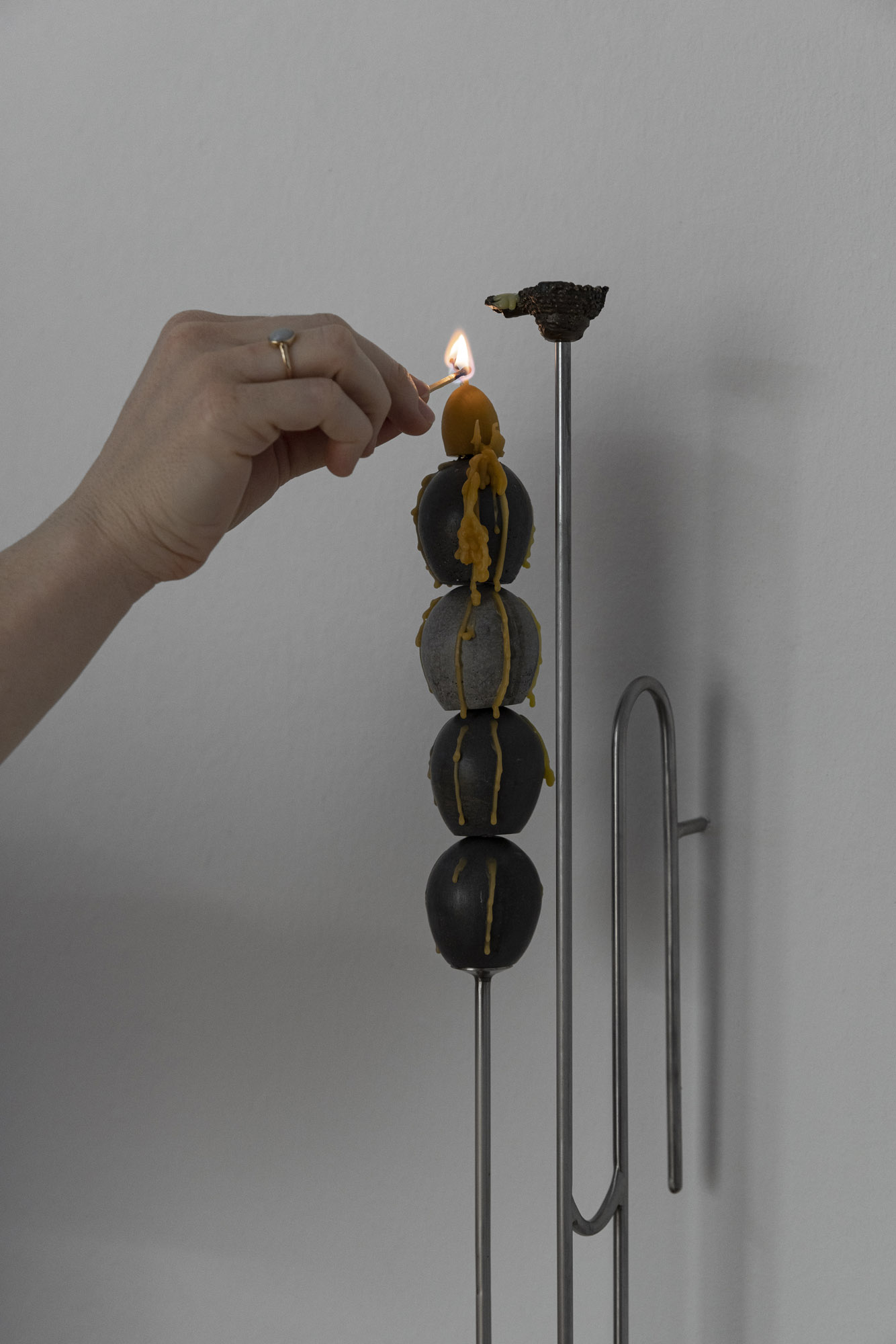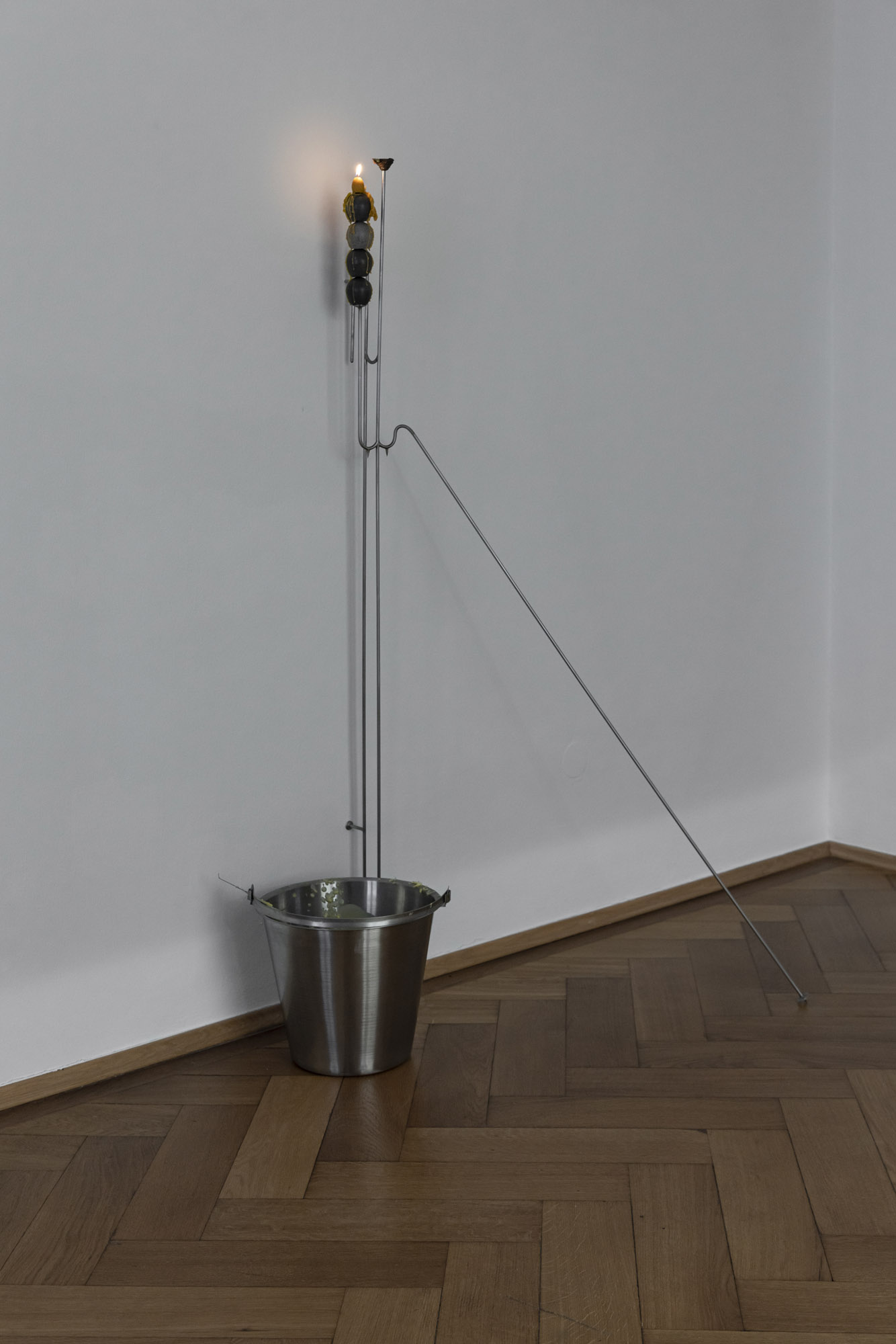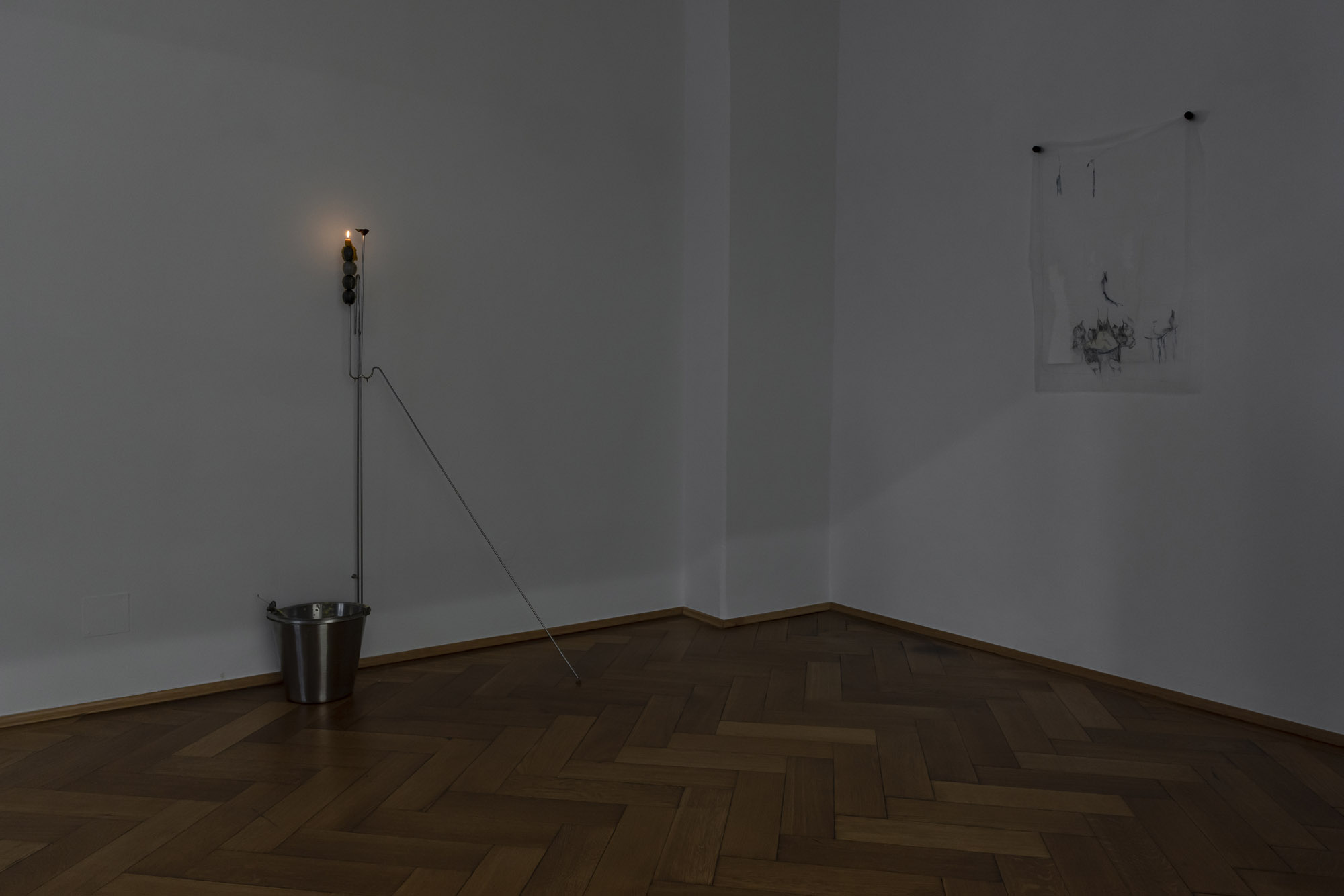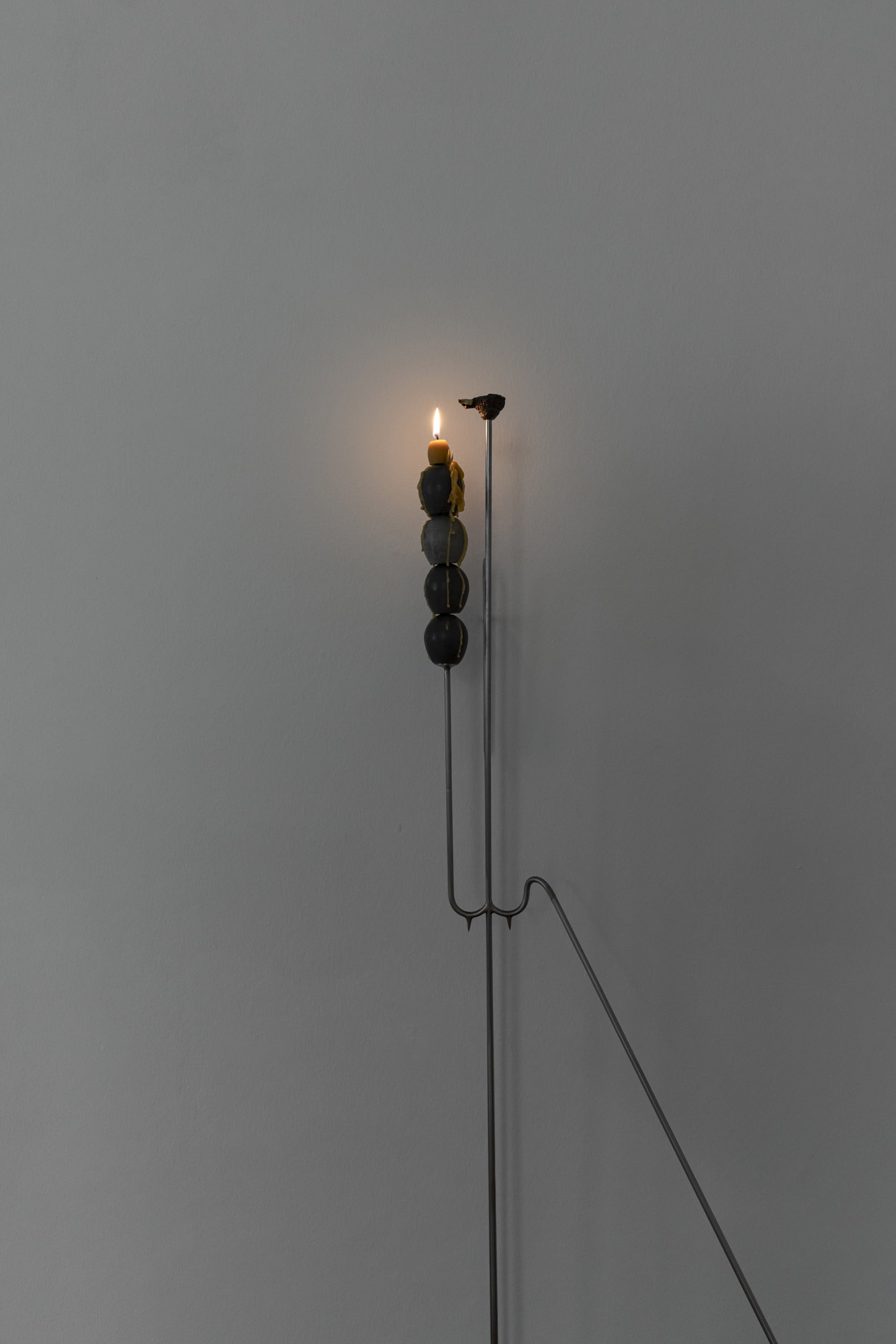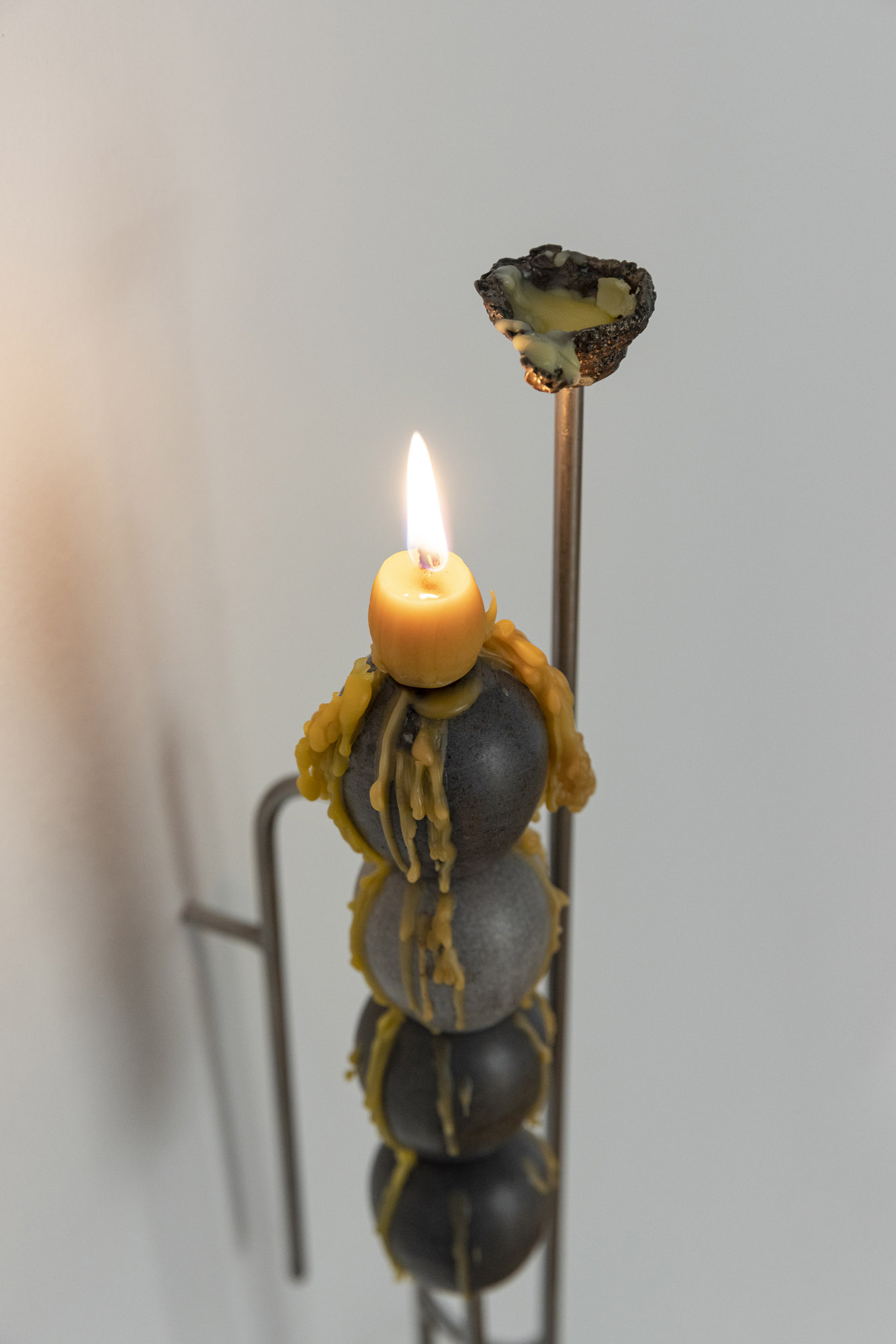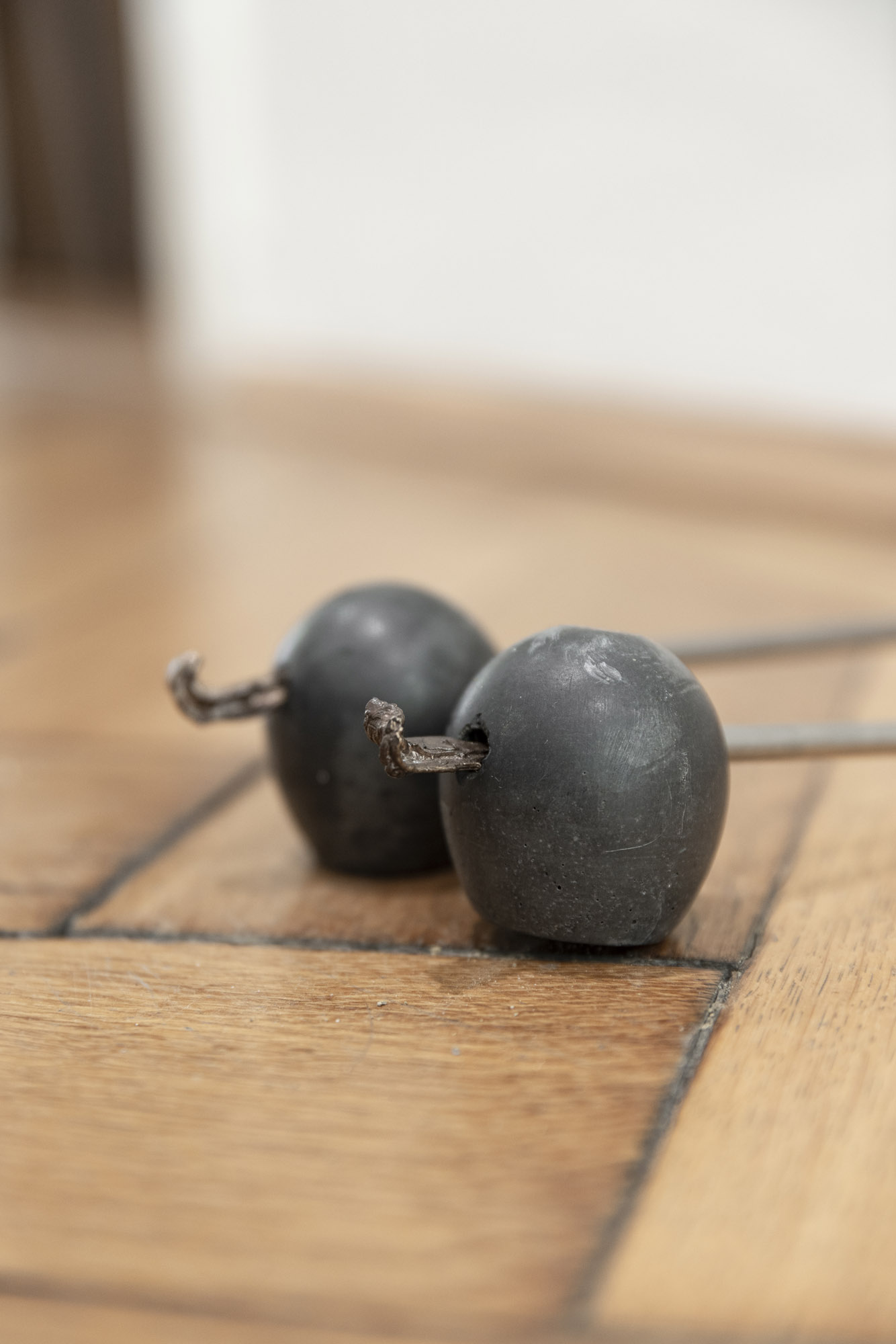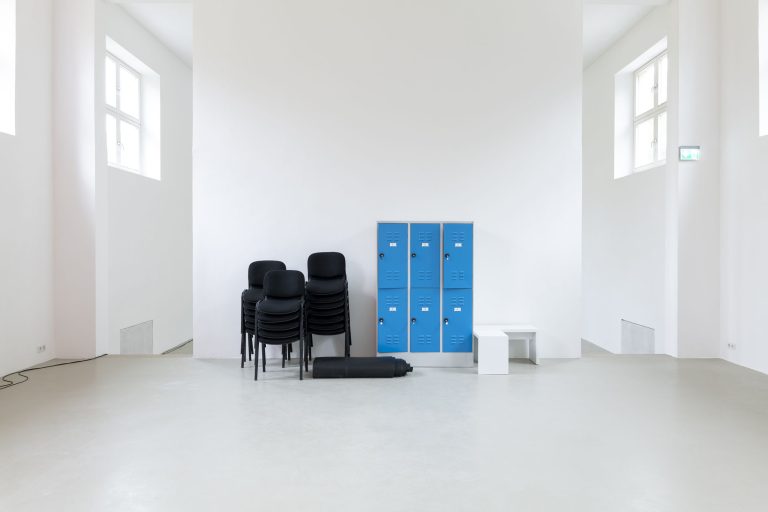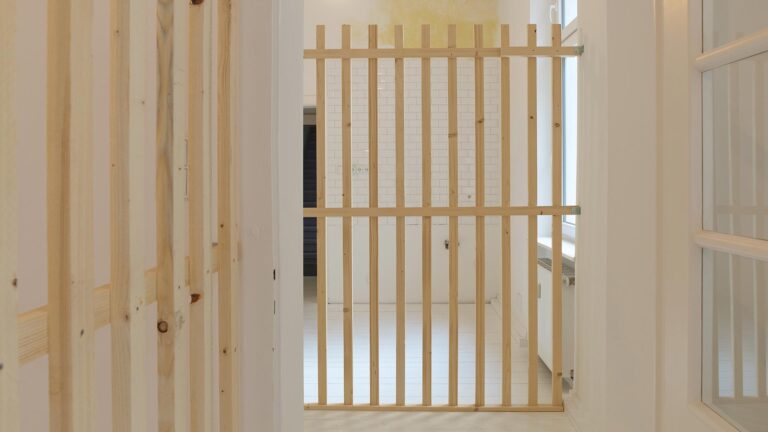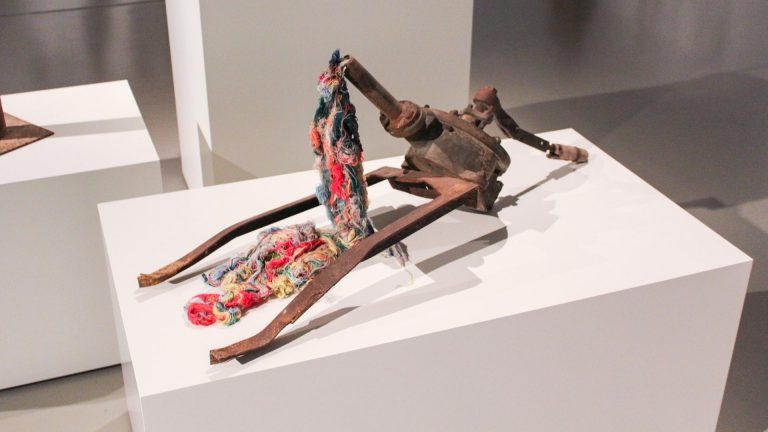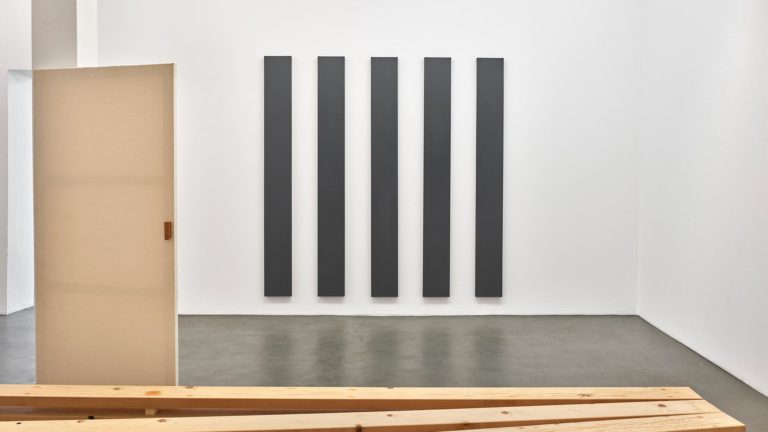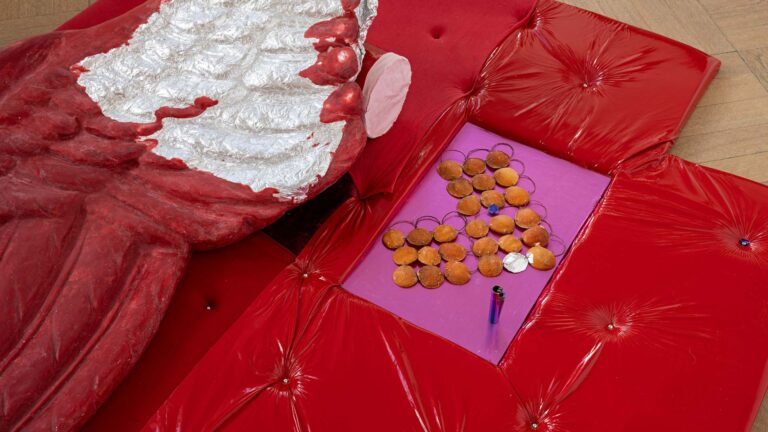Artist: Laura Ní Fhlaibhín
Exhibition title: Wet Wishes
Venue: Galerie Britta Rettberg, Munich, Germany
Date: February 17 – April 1, 2023
Photography: all images copyright and courtesy of the artists and Galerie Britta Rettberg, Munich
The works of Laura Ní Fhlaibhín depart from enchanted lands of incantations in a modern moment of medicinal equipment and extractive petro-economies. Simultaneous to a surgeon’s state-of-the-art tools, the landscape is filled with folktales where plants and animals are alive with magic potential and where farmers guard their lands against the piseóg. Defined loosely as a curse, this term is generally used for Irish mythology and is associated with an object that once lived or might have lived. Objects in limbo between life and death have the ability to steal luck from the affected for the one who laid the curse.
Bronze amulets, willow branches, and the form of an egg are arranged in a spatial constellation of matter that follows the ebbs and flows of gravity around these objects. Wind blows in the wisps of willows that grow in soggy poor soil where snail slime trails dance in the moisture of crushed little bodies. Here is where ancestors join in with the insect, mammal, vegetable and mineral soil that is the placenta of the earth. Moist soil on a green island, dampness brings life while springs sprout from under the cracked stone.
The body is a container for the wetness that sustains it: life-blood, spittle down the cheek, sweat on the brow, wet substance that grows with excitement. Dribbling leaks define wellness and illness, a needle pricks into blood attached to the drip – both good and evil, as with an egg. Eggs are symbols of fertility, of new life, of regeneration – but it is also the most common form of the piseóg. Similarly, what once meant youth and fertility becomes illness and leakage in ailing bodies that transform with the passing of time.
In Ireland, life and death are conditioned by conflicting ideas often at odds one with the other – the fairies and the Catholic church. For a generation of women who were raised both Catholic and Irish – liberation never arrived. Unable to experience the promise of sexual freedom, Ní Fhlaibhín creates an orgasmic ecstatic afterlife.
Ageing is a double-curse for women once the body is no longer fertile. Whereas menopause only signals the half-point of women’s lives, it is seen by the social order as its’ final point. The silence that enwraps this subject belongs to a long-established patriarchal dominance that defines women’s bodies as reproductive machines. Dedicated to her nana’s generation, Ní Fhlaibhín has used her embroidery technique on incontinence pads to write “good luck” in her grandmother’s handwriting – invoking not the curse, but well-wishes.
The softness of the absorbent pad contrasts with the sharpness of surgical tools – a contrast that accompanies us from birth to death. When leaking flesh finds the orgiastic bending of snail trails through the soil, when the petro-remains of our ancient ancestors are infused with the warm liquid of a cracked egg and the decaying remains of the willow leaves. When our bodies slide, together, touching, infused with beeswax and speckled with bronze in an eternal exchange of lubricating energies. We will make zigzagging trails through the soil.
The ghost ship sails down a river of mist – a river always has two banks, life and death – and the middle is defined by wetness. Egg, willow, wetness – a double-sided foil of the piseóg.
-Àngels Miralda



